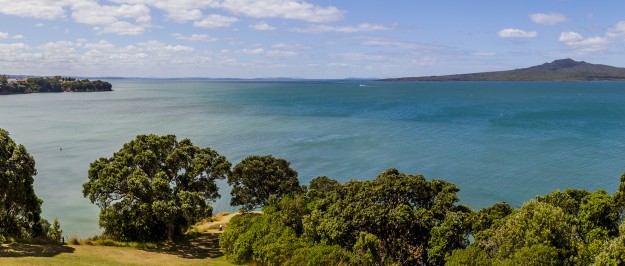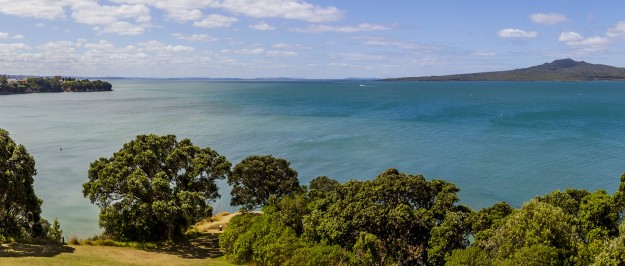Harbour Navigator: Vertical SaaS is devouring software - and AI is hungry for the next bite
In 2011 Andreessen Horowitz, founder of a16z, famously said “software is eating the world”, making the prediction that, over the next decade, the world would see many industries be disrupted by software. Perhaps some of the more prominent examples were how Netflix gutted Blockbuster and the suicide of Borders as it handed over its online business to Amazon under the theory that online book sales were unimportant.
Today, softw...
Harbour Investment Outlook: Waiting game
Key market movements
The MSCI All Country World Index (ACWI) increased 4.5% last month, in New Zealand dollar-unhedged terms. However, the strength was due entirely to NZD weakness with returns in NZD-hedged terms, coming in at -1.1% for October.
Locally, New Zealand equity market returns picked up after a couple of flat months, with the S&P/NZX 50 Gross Index (including imputation credits) increasing 1.7%. The S&P/ASX 200 Ind...
Harbour Navigator: I see red, I see red, I see red: Adapting to Trump policy uncertainty
A Trump victory and likely Republican congressional sweep could signal major shifts in US economic policy, such as tax and tariffs.
Markets had partly leaned into a Trump win, with many strategists previously picking a Republican clean sweep as a 30-40% chance.
However, the immediate reaction of markets suggests a further possible movement of asset prices as bond yields factor in potentially higher US inflation, larger US defi...
Harbour Navigator: Don't be disappointed by dividend illusions
Investors may be paying too much for short term dividend income illusions.
Paying dividends from capital rather than recurring earnings is not sustainable over time
One-off asset sales might better be paid out as special dividends or returned to shareholders as share buy backs
Investors must exercise caution when evaluating companies offering seemingly attractive dividends. A high current yield may mask underlying issues that ...
Harbour Navigator: Responsible Investment in the mainstream - it's no side hustle
The climate transition is driven increasingly by the economics as technology takes over, says Dr Rod Carr
More than $1bn a day globally is needed for climate transition and adaptation over the next thirty years and the private sector has a pivotal role to play
FMA focusing on greenwashing given the uptake by consumers
Modern Slavery and Nature are likely the next frontiers of responsible investing.
The recent RIAA Aotearoa New...
Harbour Navigator: How an easing process is felt by different households
The RBNZ has started its easing cycle and markets expect much more, taking the OCR to 3% in one year’s time.
Lower interest rates should boost economic activity, while higher council rates and insurance costs are likely to provide an offsetting force.
Household experiences of lower interest rates will differ greatly, depending on respective financial situations. We think those with debt are likely to benefit most from a cas...
Harbour Investment Outlook: Surprise stimulus
Key market movements
The MSCI All Country World Index (ACWI) edged 0.6% higher last month, in New Zealand dollar-unhedged terms. Returns in NZD-hedged terms were much better for a second month due to continued NZD strength, coming in at 1.9% for September.
Locally, New Zealand equity market returns for the month were again muted after strong returns in July, with the S&P/NZX 50 Gross Index (including imputation credits) flat. ...
Harbour Navigator: Beijing gets serious: fiscal and monetary stimuli to boost Chinese growth
The Politburo and PBOC have signalled a strong commitment to rebooting the economy, with a range of monetary and fiscal measures, though the size of the stimulus is unlikely to match the scale of a decade ago.
Market reactions to China's recent announcements indicate an expectation that stimulus measures will meaningfully impact economic growth in the short-term.
While some analysts are optimistic about short-term growth, ot...
Harbour Navigator: RBNZ unlikely to accelerate easing
Following last month’s RBNZ rate cut, financial markets have moved to price an accelerated easing cycle, inconsistent with the central bank’s latest OCR forecast and largely driven by lower US rates.
Recent New Zealand economic data don’t support current market pricing with Q2 GDP contracting less than the RBNZ had forecast and soft data showing improvement in response to lower interest rates.
Don’t get us wrong, things...
Harbour Navigator: What does equity market concentration really tell us?
Recently one of the world’s largest companies posted earnings. Nvidia has been more than just a market darling, it has epitomised the concentration of stocks in the global equity index. Rising from a fraction of a percent, Nvidia now stands at over 6% of the S&P 500 index which is comprised of larger capitalisation US stocks. Collectively the top ten stocks account for some 37% of that market, when a decade ago the top ten sto...
READ MOREHarbour Investment Outlook: Consolidation after strong returns
Key market movements
The MSCI All Country World Index (ACWI) retreated almost 3% last month, in New Zealand dollar-unhedged terms, after gaining 4.2% in July. August returns in NZD-hedged terms were much better due to a bounce in the NZ dollar, coming in at 1.6%.
Locally, equity market returns for the month were muted after a spectacular August, with the S&P/NZX 50 Gross Index (with imputation credits) returning 0.4%, and the...
Top 10 risks and opportunities for 2024 - A mid-year reflection
As we sit down to write our Top 10 Risks and Opportunities each year, we write it not so much as a forecast for the next 12 months, but rather as a reflection of where we are and what that can potentially tell us about where we are going. Because one unmistakable part of investment research and asset management is that the starting point matters. Be it equity market valuations where we have 100 years of data telling us if you ...
READ MOREHarbour Investment Outlook: Rotation amid strong returns
Key market movements
MSCI All Country World Index (ACWI) posted another strong return in July, at 4.2% in New Zealand dollar-unhedged terms for the month. Returns in NZD-hedged terms were much lower due to further NZD weakness, coming in at 1.3%. Performance across sectors was mixed with a rotation away from the recent outperforming sectors of IT (0.1% m/m) and communication services (-0.7% m/m), in favour of utilities (8.6% m...
Harbour Navigator: A selloff under clear blue skies sparks risk-off
Since mid-July global equity market prices have fallen by around 5% as a range of risk factors have risen to the top of investors’ considerations. The drivers for a selloff are rarely perfectly clear and generally include broader economic, positioning and technical influences. When markets were travelling well in the first half of 2024, you could be forgiven for thinking that conditions were like a perfect winter’s day in Well...
READ MOREHarbour Navigator: When Rates Fall, Equity M&A Comes to Play
The Arvida deal and now cancelled Warehouse takeover approach gave rise to an expectation of more M&A (merger and acquisition) activity. A lift in capital market activity could be prompted by expectations of lower interest rates linked to weakening activity in the current economic cycle.
The state of the current economic cycle reflects an established cross-sector pattern of weakening activity alongside falling interest rates, ...
Harbour Navigator: RBNZ acknowledges weakening data, establish option to cut OCR quite soon
The RBNZ held the OCR at 5.50%, but in acknowledging a significant weakening in inflation pressures, they set themselves up with the option to cut the OCR pre-Christmas, possibly as early as their next meeting in August.
“When the facts change, I change my mind. What do you do, sir?” John Maynard Keynes’ ghost could have been at the RBNZ’s OCR review meeting. The central bank, having been determined to bring inflation and inf...
Harbour Investment Outlook: A fork in the road for central banks?
Key market movements
MSCI All Country World Index (ACWI) posted a strong return in June, at 3.1% in New Zealand dollar-unhedged terms for the month. Returns in NZD-hedged terms came in at 2.6% after New Zealand dollar weakness. Performance was again mixed from a sector perspective. Information technology surged ahead by 10.0%, followed by communication services at 4.6%. Utilities and materials were the worst performing sectors...
Harbour Navigator: Weak QSBO points to lower rates ahead
Weak QSBO points to lower rates ahead
The Q2 QSBO was a sobering read as it corroborated other indicators that suggest the New Zealand economy has taken a sharp turn for the worse in recent months.
The survey indicated a trifecta of rapid labour market easing, contracting economic activity and markedly reduced inflation pressure.
We expect the RBNZ to take note, likely delivering a more balanced message at next week’s Jul...
Harbour Navigator: Back on the ground in China
Consumer sentiment in China remains cautious post-pandemic, with spending reluctance despite crowds being back to normal.
Demographics are shaping long-term views of consumption and investing, with the UN’s central forecast projecting China’s population to halve over the next 75 years.
Policy initiatives will be closely watched to see whether these can offset the structural changes occurring and, of course, a cyclical recovery...
Harbour Investment Outlook: Treading water amid uncertainty?
Key market movements
MSCI All Country World Index (ACWI) was stable in May with a return of 0.2% in New Zealand dollar-unhedged terms for the month. Returns in NZD-hedged terms were considerably better at 3.7% after a combination of US dollar weakness, and New Zealand dollar strength on the back of supportive Chinese policy. Performance (unhedged) was mixed from a sector perspective, with only information technologies, utiliti...
Harbour Investment Outlook: Choppy waters ahead
Key market movements
After a strong first quarter, the MSCI All Country World Index (ACWI) fell in April with a return of ‑2.3% in New Zealand dollar-unhedged (-2.7% in NZD-hedged) terms for the month. Performance was broadly negative from a sector perspective, with only the utilities and energy sectors in the black. Information technology was a standout on the negative side with a -5.6% return.
Locally, market returns for the...
Harbour Navigator: Global Divergence
After years of most of the world sharing the common sudden stop and recovery associated with COVID-19, there are now significant differences in economic prospects across countries. These differences have led to some central banks lifting policy rates (à la Bank of Japan) while others, such as the European Central Bank, US Federal Reserve and the Bank of England have hinted at cuts. The Swiss National Bank has gone one step fur...
READ MOREHarbour Navigator: Hot sheds - Growth in data centre demand and the real estate investment opportunity.
Global demand for data centre space is set to increase significantly and the compute density of GenAI significantly increases the electricity required to keep computer capacity cool.
Real estate is a key determinant of a successful data centre, with data centres having specific locational requirements making land with access to electricity a crucial enabler for data centres.
In our opinion, the DC megatrend tail wind may remai...
Harbour Investment Horizon: Long Term Investment Return Assumptions
Summary
Investors anchor long-term strategic asset allocation by considering a range of assumptions for key asset classes
Harbour’s long-term return assumptions are one of many inputs into considering strategic asset allocation across multi asset portfolios, such as conservative, balanced and growth mandates
Our return assumptions are market valuation aware and, as a result, our most recent forecast is for a narrowing in th...
Harbour Investment Outlook: Turning Point for Earnings?
Key market movements
The MSCI All Country World Index (ACWI) rounded off the first quarter with a third positive monthly return at 5.1% in New Zealand dollar-unhedged (3.5% in NZD-hedged) terms for the month. From a sector perspective performance was broadly positive, with energy the outstanding performer at 7.6%, followed by materials (5.5%) and utilities (4.8%).
Locally, market returns for the month were also strong with t...
Harbour Navigator: Bank share price surge- sprinting ahead?
The touchstone for Australasian banking sector trends is the Commonwealth Bank of Australia (CBA), and CBA’s recent share price surging towards $120 has provided another catalyst for many to ask about the outlook for bank share price performance. For equity analysts, we think about the price to earnings ratio as an indicator of valuation; CBA’s has now topped 21 times expected earnings, a mark that most analysts say make the b...
READ MOREHarbour Navigator: Bank competition - Innovation trumps more capital
The Commerce Commission’s draft market study into New Zealand’s personal banking services made 17 recommendations which, if implemented, would likely have some impact on bank competition.
But they likely entail compromises to financial stability
In Australia, Macquarie Bank’s highly digitized banking solution offering has reinvigorated competition in the deposit and mortgage markets.
The learnings from this Australian experien...
Harbour Navigator: Is bank lending too cautious?
You might think that our title is provocative, and a fringe view. But this was a consensus question from investors and analysts after our research visit to Australia in the week before Easter.
Regulation has encouraged bank lending to become more conservative, more housing focused and increasingly outsourced through broker channels.
Regulators seem to want even less bank risk and more financial stress tests.
As a result...
Harbour Navigator: Interest rate pain intensifies
Lenders have experienced only modest defaults on loan portfolios, underpinning an argument that monetary policy is yet to really bite.
However, we note arrears and KiwiSaver hardship withdrawals are rising before loan losses are felt, demonstrating consumer stress, and portending further spending reductions.
Unemployment is typically the final penny to drop, and indicators of the labour market suggest consumption will contin...
Harbour Navigator: Climate Clarity - Developments in climate and sustainability reporting
Many New Zealand listed companies will be reporting against new climate disclosure regulation for the first time this year.
The U.S. SEC has recently approved new mandatory climate reporting rules, following in the footsteps of New Zealand and other countries.
Globally, sustainability reporting standards have been developed under the newly formed International Sustainability Standards Board, involving the consolidation of ex...
Harbour Outlook: Transition Period for Markets
Key market movements
The MSCI All Country World Index (ACWI) continued its positive run with a 5.4% return in New Zealand dollar-unhedged (4.7% in NZD-hedged) terms for the month. From a sector perspective performance was broadly positive, with utilities the only negative sector at -0.8%. Leading the way was consumer discretionary at 7.8% and information technology at 6.1%.
In contrast local market returns for the month wer...
Harbour Navigator: New Zealand households to remain challenged
New Zealand households have experienced a significant increase in their cost of living over the past four years, led by higher interest rates, transport, food, and housing costs.
Total consumption has been able to grow 8.5% over this time due to large increases in household income and wealth, alongside record net migration.
The per capita picture, however, is much weaker and likely reflects the impact of monetary policy tigh...
Harbour Outlook: Bumps in the road on the way to lower rates?
Key market movements
The MSCI All Country World Index (ACWI) started the year off with a 3.5% (1.3%) return in New Zealand dollar-unhedged (hedged) terms for the month. From a sector perspective performance was mixed, with information technology leading the way at 3.2%, followed by communication services at 2.9% and healthcare at 2.2%. On the other side of the ledger materials was the worst-performing sector at -5.4%, whilst u...
Harbour Navigator: Time to revisit banking in New Zealand?
“The only thing worse than a very profitable banking system is a very unprofitable banking system.”
- Jonathan Mott, 2010, from his presentation to the Australian Senate Economic References Committee inquiry into Competition within the Australian banking sector
Major bank profitability as measured by return on equity is not exceptional compared to history or alternative listed investments.
Further strategic moves seem like...
Harbour Outlook: Strong finish to the year, but can it continue?
The US Federal Reserve performed an unexpected dovish pivot at its December meeting and markets now anticipate a "soft landing" where inflation returns to 2% without the Fed having to inflict severe economic damage, opening the gates for a flood of cash into equity markets. The so-called ‘Fed pivot’ saw capital markets quickly focus on when and by how much the Fed and other central banks would cut interest rates. After a lower-than-expected core inflation reading capital...
READ MORETop 10 Risks and Opportunities for 2024
When establishing our core investment views for the near- and medium-term, we are conscious that markets often skew towards tail risks, and also towards factors that are already observable but uncertain.When our research team considers technology disruption in sectors and the macro-environment, we have to be aware that the range of outcomes may provide investment opportunities as markets can react both slowly to news and rapid...
READ MOREHarbour Navigator: Understanding the RBNZ’s recent hawkish shift
The Reserve Bank of New Zealand (RBNZ) surprised many at its November Monetary Policy Statement (MPS) with a more hawkish view of recent economic developments. While we don’t necessarily view the skew in economic risks the same way, we recognise the high degree of uncertainty in the economic outlook and the importance of understanding the central bank’s point of view.
At the heart of the RBNZ’s hawkish shift are two factors: h...
Harbour Outlook: Inflection Points
Global share markets delivered one of their strongest monthly returns as market expectations moved from a ‘higher for longer’ interest rate environment to a ‘soft-landing’ for the US economy. The fall in long term bond yields was driven by softer economic data, renewed signs of slowing inflation, and a lower-than-expected US Treasury funding requirement. The continued fall in inflation data allowed central bankers to deliver ‘hawkish pause’ (not lifting rates but ready to if inflation re-emerges) type comments during the month. This weak inflation data contributed to markets beginning to price in cuts to official interest rates over 2024. Given the rise in bond yields was the key headwind for equities in prior months, the fall in yields drove a sharp rally in equity markets.
READ MOREThe Future of Wealth: Part four - The future of portfolio construction
Is there really anything better than a 60/40 portfolio?The future of wealth is shaped by a new generation of investors - bringing new thinking, expectations, and standards. Across this four-part series, Harbour delves into the evolving landscape and strategies for generating customer value, poised to be the primary catalyst for both present and future transformations in the sector.
In part four, Portfolio Manager, Chris Di Le...
The Future of Wealth: Part three - The future of responsible investing
The future of wealth is shaped by a new generation of investors - bringing new thinking, expectations, and standards. Across this four-part series, Harbour delves into the evolving landscape and strategies for generating customer value, poised to be the primary catalyst for both present and future transformations in the sector.
In part two, Senior Credit Analyst, Simon Pannett, explains the responsible investment spectrum and the growing need for the industry to possess expertise in ethical and responsible investment choices for investors.
READ MOREHarbour Outlook: Economic Crosscurrents
- The MSCI All Country World Index (ACWI) continued its decline, posting a -2.7% loss in New Zealand dollar-hedged terms (and a 0.2% gain in unhedged NZD terms). Despite three consecutive months of negative returns, the 12-month return figure for the index stands at 9.5% in NZD-hedged terms and 10.4% in unhedged terms.
- Returns for the month were similarly weak in local markets, with the S&P/NZX 50 Gross Index (with imputation credits) falling -4.8%, and the S&P/ASX 200 Index falling -3.8% (-2.4% in New Zealand dollar terms).
- Bond indices were also negative over the month. The Bloomberg NZ Bond Composite 0+ Yr Index fell -0.2%, whilst the Bloomberg Global Aggregate Bond Index (hedged to NZD) also dropped -0.7% over the month. This came as the US market saw 10-year government yields increase to 4.9%, a level not seen since 2007, with resilience in US economic data prompting the market to largely unwind an expectation that the Federal Reserve would be cutting rates in 2024.
The Future of Wealth: Part two - The future of investing: bridging the gender gap
The future of wealth is shaped by a new generation of investors - bringing new thinking, expectations, and standards. Across this four-part series, Harbour delves into the evolving landscape and strategies for generating customer value, poised to be the primary catalyst for both present and future transformations in the sector.
In part two, Executive Director, Ainsley McLaren, discusses the opportunities that lie in underst...
The Future of Wealth: Part one - The future of the wealth management firm
The future of wealth is shaped by a new generation of investors - bringing new thinking, expectations, and standards. Across this four-part series, Harbour delves into the evolving landscape and strategies for generating customer value, poised to be the primary catalyst for both present and future transformations in the sector.
In part one, Andrew Bascand explores the trends set to revolutionise the wealth management sector i...
Harbour Navigator: Harbour Listed Property Sustainability Survey 2023 - Taking care of sustainable business
Sustainability benefits for property owners: Research indicates that commercial properties with higher sustainability ratings have more consistent cash flow, higher occupancy rates, higher rents, and attract tenants with lower risk. Improving sustainability can enhance cash flow quality, reduce regulatory compliance risk, and improve market perception and brand value for listed property securities.
Harbour Listed Property Sus...
Harbour Outlook: Higher for longer, but how much longer?
The MSCI All Country World Index (ACWI) declined for the second month in a row, posting a -5.0% return in unhedged New Zealand dollar terms (-3.4% in hedged terms after strengthening in the New Zealand dollar). Returns were similarly weak in local markets, with the S&P/NZX 50 Gross Index (with imputation credits) falling -1.9%, and the S&P/ASX 200 Index falling -2.8% (-4.1% in New Zealand dollar terms).
Globally, weakness was...
Harbour Navigator: The ‘Longroad’ to solar success
It's scorching hot in Phoenix, Arizona, where temperatures have reached record highs. This extreme weather is making it a perfect place for renewable solar energy developments like Infratil’s investment - Longroad Energy.
The new Inflation Reduction Act (IRA) includes many beneficial features to support clean energy developments (such as Longroad Energy) including tax credits, incentives for American-made components, and su...
Harbour Navigator: Sustainability themes from reporting season
Climate change analysis from companies is evolving on the back of new reporting regulation.
Cost of living pressures and labour market tightness are leading to staff pay increases and customer hardship initiatives for some companies.
Sustainability measures are being increasingly included as key performance indicators (KPIs) in executive pay practices.
Sustainability issues continued to feature prominently in the latest rou...
Harbour Navigator: Made in America
Technology is in place for the roll out of driverless cars and trials are underway. Head of Equities, Craig Stent got to test out the new Jaguar I-PACE first-hand in Phoenix.
There are various hurdles to overcome before we see more widespread adoption. Societal acceptance and regulatory restrictions may inhibit the uptake.
‘Made in America’ is back, with evidence of onshoring manufacturing occurring, however it is likely ...
Harbour Navigator: What you need to know about neutral interest rates
After declining between 1960 and 2020 due to growing working populations and decreasing productivity, neutral interest rates have stopped falling in recent years. This has prompted increased debate about where they go from here.
Neutral interest rates matter for financial markets because they help assess the impact of monetary policy and affect the valuation of financial assets based on discounted cash flows.
Future neutra...
Harbour Outlook: Past the winter solstice, but is it spring yet?
Key points
After a string of strong returns for equity markets August saw a retreat. The MSCI All Country World Index (ACWI) returned -2.1% in New Zealand dollar-hedged terms, however weakness in the New Zealand dollar over the month helped the index move 1.6% in New Zealand dollar terms. Closer to home the S&P/NZX 50 Gross index (with imputation credits) fell 4.2%, whilst the S&P/ASX 200 Index fell a more modest -0.7% in AUD...
Harbour Navigator: GLP-1 A healthcare breakthrough: hype versus reality
The GLP-1 drug class, which has predominantly been used to treat type 2 diabetes, has captured notable mindshare with healthcare specialists and macro investors due to initial findings from the Select study suggesting potential effectiveness of these drugs in addressing cardiovascular risk in obese patients.
The broader implications for obesity, cardiovascular events and other associated conditions within this drug class may ...
Harbour Navigator: Is a2 Milk the canary in the coal mine pointing to a Chinese structural slowdown?
Our recent visit to China has changed our view of the structural impediments facing our largest trading partner.
Demographic changes are impacting consumers’ medium-to-long-term outlook of the economy and they are adjusting their spending as a result.
The a2 Milk Company gave us a flavour last month of the impact from deteriorating demographics on the youngest age cohort.
After a multi-year COVID hiatus, we finally...
Harbour Navigator: New Zealand’s weakening export outlook to provide multiple challenges
Slowing global demand, led by a stalling Chinese economy, has seen New Zealand’s commodity export prices fall sharply in recent months.
Weaker export revenues will likely weigh on economic activity, supporting our view that further Reserve Bank of New Zealand (RBNZ) rate hikes are not necessary and causing a further deterioration in the fiscal accounts that may require additional bond issuance.
Export weakness is also likely...
Harbour Navigator: Decarbonisation progress – more than hot air?
New Zealand’s emissions have not been falling despite the rising number of climate commitments, but there have been some encouraging examples of action from large emitters in the market.
Fletcher Building has developed the country’s lowest carbon cement through substituting coal in the production process with alternative fuels, such as used tyres and construction waste.
Contact Energy is investing significantly in new renewa...
Harbour Outlook: Inflection points for interest rates and earnings?
Key points
It was another strong month for equities, with the MSCI All Country World Index (ACWI) returning 2.0% in New Zealand dollar terms, and 3.2% in New Zealand dollar-hedged terms. Closer to home the S&P/NZX 50 Gross index (with imputation credits) advanced 1.2%, whilst the S&P/ASX 200 Index added 2.9% in AUD terms (and 2.4% in NZD terms).
Globally, returns were strong across all sectors, with energy leading the way at ...
Harbour Navigator: After the inflation peak
Investors should gradually gain confidence in most assets, as pessimism in the outlook for the economy gives way to understanding that highly restrictive monetary policy has done its job.
Despite the range of risks for financial markets, falling inflation has certainly been a positive factor for broad investment returns. Up until recently equity markets have also enjoyed a period of generally better than expected corporate ea...
Harbour Outlook: Is a soft landing really possible?
Key points
It was a strong month for global markets. The MSCI All Country World Index (ACWI) returned 3.5% in New Zealand dollar terms, and 5.4% in New Zealand dollar-hedged terms. Returns were strong across all sectors, with consumer discretionary standing out at 9.9%. There was a general shift towards cyclical sectors with industrials and materials rounding out the top 3.
Australasian markets also rallied, with the S&P/NZX ...
Investment Horizon: Top 10 risks and opportunities for 2023 – A mid-year reflection
At the risk of jinxing things and, barring a few weeks in March where the collapse of Silicon Valley Bank looked like it could create broader risks for the banking system, the first half of 2023 was relatively uneventful. Particularly when compared to the corresponding periods
in 2020 and 2022.
After a year of negative returns for both bonds and equities, “the scores on the board” look healthier for both. Equities have bounc...
Investment Horizon: On the ground in China – the key shifts needed to counter strong bearish sentiment
Senior Research Analyst Øyvinn Rimer presents his noteworthy insights and discoveries from a recent visit to China, where he visited more than 30 companies spanning diverse industries. Despite prevailing pessimism, certain winners emerged, and indications suggest an imminent shift towards a favourable upturn.
China property, prospective policy and iron ore – how low can it go?
After a long four years, we were finally back on ...
Harbour Outlook: AI: the fourth industrial revolution?
Key points
The conflict between observed inflation and soft lead indicators for economic activity continues to influence interest rates and economic forecasts. While some central banks may pause from raising rates, the overall balance of risks tilts towards tighter financial conditions. Investments with robust fundamentals and manageable debt levels are preferred in this environment.
It was a weak month for Australasian marke...
Harbour Navigator: Global trends in taxonomies and what it means for New Zealand
Increasingly, countries around the world are developing sustainable finance taxonomies to classify environmentally friendly economic activities and prevent false claims of sustainability (“greenwashing”).
Europe has taken the lead in establishing a green taxonomy, and other countries like Australia are also making progress in this area.
New Zealand is beginning to explore the possibility of implementing its own sustainable...
Harbour Navigator: Is inflation sticky?
After an aggressive RBNZ tightening cycle, the New Zealand economy is likely to enter recession later this year.
Inflation, however, is unlikely to quickly return to the RBNZ’s 1-3% target range and involves three broad steps – supply chain normalisation, lower housing costs and a drop in wage growth. Only the first step is complete.
We expect the RBNZ to increasingly recognise the impact of its rapid rate hikes to highly...
Harbour Outlook: Catch-22 - Inflation vs. Earnings
Key points
At a headline level, stock markets appear to be in a “catch-22”, digesting lower inflation numbers while trying to assess how much of this inflation is down to lower growth, which may then flow through to earnings. See more under ‘what to watch’.
New Zealand equities and bonds both delivered strong returns over the month, with the S&P/NZX 50 Gross index (with imputation credits) returning 1.1% and the Bloomberg NZ ...
Harbour Navigator: New Zealand's external reliance is in the spotlight
New Zealand is a small, open economy with a heavy reliance on the rest of the world for export revenue and funding.
The funding reliance is particularly acute currently as our tourism sector isn’t generating its normal amount of foreign revenue, pushing our current account balance to its largest deficit on record, almost 9% of GDP.
While our current account balance should improve as tourists continue to return to New Zea...
Harbour Outlook: Financial conditions starting to pinch?
Key points
The MSCI All Country World Index returned 2.1% in New Zealand dollar terms, and 2.5% in New Zealand dollar-hedged terms. At the sub-sector level financials lagged after events in the US and European banking sectors early in the month. The aftermath saw investors shift towards ‘Big-Tech’ sectors such as information technology and communication services.
The New Zealand equity market (S&P/NZX 50 Gross with imputati...
Harbour Navigator: Chinese economic recovery accelerating
Less than six months ago the Chinese economy was partly locked down with COVID restrictions and commentary remained bearish across a range of industries.
Fast forward to now and Chinese non-manufacturing purchasing managers’ index (PMI) readings are pointing to a very solid recovery in Chinese economic activity from 2022’s COVID lockdowns.
A core indicator, the China non-manufacturing PMI for March of +58.2 was well up fro...
Harbour Navigator: Fortress Australia
The banking system in Australia has multiple points of difference compared to the US, all pointing to a greater capacity to weather financial and economic stress. What we heard in our visit to Australia this week was exceptionalism and resilience in the banking system.
“A show of force” is how the Australian Financial Review subsequently described their Summit. In previous years you might have heard the regulators bemoan the ...
Harbour Navigator: What does global banking stress mean for the RBNZ?
The recent failure of Silicon Valley Bank (SVB) and rescue of Credit Suisse have tightened global financial conditions and reduced the need for monetary policy to be as restrictive.
As a small open economy with a heavy reliance on global investors to fund our current account deficit, New Zealand has a high sensitivity to the health of the global economy and international financial markets.
At this stage, we expect the...
Harbour Navigator: Harbour's solution to measuring carbon performance for fixed interest funds
An entity’s carbon intensity is an input into Harbour’s ESG assessment of a borrower, alongside an appraisal of behaviours and performance in other environmental, social and governance (ESG) aspects.
Carbon footprint is calculated as the weighted average of a portfolio’s ownership share of each holding company’s carbon output. This is a useful metric for equity fund investors, however fixed interest investors don’t have an ‘o...
Harbour Outlook: Inflation not giving up without a fight
Key points
The MSCI All Country World Index returned 1.3% in New Zealand dollar terms, and -1.9% in New Zealand dollar-hedged terms. At the sub-sector level, we saw a continuation of last month’s thematic with defensive sectors (utilities, materials) lagging as investors rotated into the more interest rate-sensitive sectors such as information technology and financials.
The New Zealand equity market (S&P/NZX 50 Gross with i...
Harbour Navigator: RBNZ not done yet but getting close
The RBNZ lifted the OCR by 50bps at the February MPS and continues to anticipate further tightening from the current 4.75% to 5.5% as inflation remains too high and labour markets are too tight for comfort.
The North Island floods are likely to add to inflation and activity in the medium term. Beyond the floods, the tension between strong historical data and weak forward indicators continues in New Zealand – we believe the...
Harbour Navigator: China on the mend
China’s economic and demographic imbalances have increased during COVID which may pose challenges for long-term growth. However, the near-term reopening of China’s post-COVID economy will likely have profound impacts for many New Zealand and Australian companies.
The Chinese consumer is cashed up with record deposit growth during the COVID era. Although the overall household balance sheet has seen asset price declines, ve...
Harbour Outlook: Investment markets feel the new year cheer
Key points
The MSCI All Country World Index returned 4.9% over the month and 6.4% in New Zealand dollar-hedged terms. Sub-sector performance was almost a mirror image of last year, with more defensive sectors, such as utilities and consumer staples, lagging as investors rotated to the more interest rate-sensitive sectors such as consumer discretionary, communication services and information technology.
The New Zealand equit...
Harbour Navigator: How the megatrends influence investment opportunities
Harbour’s core equity portfolios have a “growth” bias. Our investment process has multiple steps which includes assessing key secular trends that are underappreciated. Some people call these themes megatrends.
Secular trends tend to be long-lasting, as they transcend industry shifts and cyclical economic activity, and ultimately lead to sustained growth.
At Harbour our core equity growth investment process has a focus on the...
Harbour Navigator: After the tech reset
Technology and biotech companies are delivering on revenue
After a period when share valuations adjusted to higher interest rates, share prices of fast growing companies are performing following positive announcements on growth
These sectors may be less exposed to a slowdown in household spending and investors may become more comfortable with increasing exposure
As has been well documented, the share prices of long-dated ass...
Harbour Outlook: A volatile month for bond markets, equities follow
Key points
The MSCI All Country World Index returned -5.7% over the month in New Zealand dollar-unhedged terms, and -1.8% over the quarter. Returns for the month were slightly less worse in New Zealand dollar-hedged terms, down -4.7% for December. However, the dollar-hedged returns were up strongly (+7.0%) over the quarter.
The New Zealand equity market (S&P/NZX 50 Gross with imputation) held up well relative to other develop...
Top 10 risks and opportunities for 2023
Investment markets generally have many different factors that drive returns, however occasionally there are very few. 2022 will go down as the latter. Inflation was the dominant theme for 2022, creating an unenviable backdrop for bond markets as central banks raised rates to try and combat rising inflation. Equity market valuations fell sharply adjusting to higher discount rates.
While we pointed out the risk of inflation b...
Harbour Navigator: Despite significant falls, NZ houses are expensive relative to incomes
Despite a 12% decline from last year’s peak, we think New Zealand houses are still significantly overvalued based on historically high price-to-income ratios and mortgage repayment costs.
The currently tight labour market is usually a positive influence on house prices but is currently being overwhelmed by very low rates of population growth, high mortgage rates and ongoing increases in housing supply. We expect this dynamic ...
Harbour Outlook: Have we hit peak hikes? Earnings risk to come?
Key points
The MSCI All Country World Index returned 0.8% over the month in New Zealand dollar-unhedged terms, and 6.0% in New Zealand dollar-hedged terms.
The New Zealand equity market (S&P/NZX 50 Gross with imputation) finished the month up 1.9%, whilst the Australian equity market (S&P ASX 200) rose 6.6% in Australian dollar terms in the month, and 4.4% in New Zealand dollar terms.
Generally, bond yields fell over the mon...
The RBNZ seeks to “cool the jets”
NZ interest rates pushed higher this week after the RBNZ revealed it now expects to take the OCR to 5.5% given its greater concern about high inflation and a tight labour market.
While this action may bring inflation back towards its 1-3% target band more quickly, it may also push the economy into a deep recession next year.
As the economic damage from higher interest rates becomes more evident, we expect the RBNZ to bec...
Harbour Navigator: Another reason the RBNZ should slow hikes
New Zealand bank funding costs are likely to rise over the next 1-2 years as the Reserve Bank of New Zealand (RBNZ) unwinds its liquidity provision measures introduced in response to COVID-19.
As financial system cash reduces, banks will look to attract alternative sources of funding. Therefore, retail interest rates will likely be pressured higher, independent of any changes in the OCR.
We think this ought to encourage a more...
Harbour Navigator: Local or global share markets - where to invest?
In New Zealand, most of our wealth is invested locally in the property market, share market and in New Zealand dollars. There are many factors that have driven this, ranging from wanting to invest in companies we know and trust, a preference for “real” bricks and mortar assets through to ease of access. Though one could make a case today that the latter may no longer ring true with both direct global shares and global share fu...
READ MOREHarbour Outlook: Share markets bounce on better earnings
The MSCI All Country World Index returned 3.2% over the month in New Zealand dollar-unhedged terms, and 6.0% in New Zealand dollar-hedged terms.
The New Zealand equity market (S&P/NZX 50 Gross with imputation) finished the month up 2.5%, whilst the Australian equity market (S&P ASX 200) rose 6.0% in Australian dollar terms in the month, and 2.7% in New Zealand dollar terms.
Generally, bond yields rose over the month with globa...
Banks can survive mortgage servitude, but business exposure provide tail risk
Unemployment, not house prices, is the most important determinant of bank asset quality; a key factor for bank profitability and creditworthiness.
For now, housing mortgage arrears are very low, and the banking system appears structurally well prepared for a typical household loan-loss cycle.
Benign outcomes on bank loan-losses could be challenged if the consensus view that we are facing an almost exclusively household loss cy...
Harbour Outlook: Inflation constrained
Key points
The MSCI All Country World Index fell -2.0% over the month in New Zealand dollar-unhedged terms, and -9.0% in New Zealand dollar-hedged terms.
The New Zealand equity market (S&P/NZX 50 Gross with imputation) finished the month down -4.6%, whilst the Australian equity market (S&P ASX 200) fell -6.2% in Australian dollar terms in the month, and -4.0% in New Zealand dollar terms.
Bond yields rose over the month with Ne...
Sustainability trends from the recent reporting season
Climate change action and disclosure improved as new reporting standards loom
Increase in companies adopting science-based targets
Uptick in employee turnover rates
Diversity and pay gap measurement improving
Sustainability remained front of mind in the latest round of company profit reporting with many companies showing improvements in their ESG (environmental, social and governance) practices. Some of the key trends we obser...
UK tax cuts prove unwelcome to fragile markets
UK bond yields soared after aggressive tax cuts, to be funded with increased debt, were announced by Liz Truss’s new Chancellor, Kwasi Kwarteng.
In just 72 hours, the UK 5-year government bond (gilt) yield rose by 1.2 percentage points to 4.7% and the British pound (sterling) dropped by 6% against the US Dollar.
The harsh market reaction highlights how far the market has moved from the Covid-era ideas of Modern Monetary Theo...
Harbour Navigator: Rough ride ahead for NZ households
The Reserve Bank of New Zealand (RBNZ) is rapidly tightening monetary policy to combat the highest inflation in more than 30 years.
https://vimeo.com/747461893
Despite strong balance sheets coming into this year, households are feeling this most acutely as inflation is eroding purchasing power, the cost of borrowing is increasing, and asset prices have recently fallen.
The pressures are far from over as the RBNZ sees ...
Harbour Outlook: Markets still focused on inflation
Key points
The MSCI All Country World (global shares) Index fell -1.5% over the month in NZD-unhedged terms, and -2.9% in NZD-hedged terms.
The New Zealand equity market (S&P/NZX 50 Gross with imputation) finished the month up 0.9%, whilst the Australian equity market (S&P ASX 200) rose 1.2% in AUD terms in the month, and 1.8% in NZD terms.
Bond yields rose over the month with New Zealand 10-year government bond yields ending...
Harbour Navigator: Inflation moderating but not yet tamed
Inflation may have peaked, reducing the risks of severe monetary policy tightening and a deep recession.
Supply chains are partly normalising and slowing demand in most economies is reducing extreme pressures on prices.
Tight labour markets, however, are placing upward pressure on wages and the current high inflation rates mean that central banks may retain a tightening bias for some time.
Global economic growth has slowed mor...
Harbour Outlook: Quality growth through a turning point?
Key points
The MSCI All Country World (global shares) Index rose 6.1% over the month in NZD-unhedged terms, and 7.1% in NZD-hedged terms.
The New Zealand equity market (S&P/NZX 50 Gross with imputation) finished the month up 5.7%, whilst the Australian equity market (S&P ASX 200) rose 5.7% in AUD terms in the month, and 6.3% in NZD terms.
Bond yields declined over the month with New Zealand 10-year government bond yields e...
Harbour Outlook: From stagflation to low growth?
Key points
The MSCI All Country World (global shares) Index fell -4.1% over the month in NZD-unhedged terms, and -7.7% in NZD-hedged terms. The index ended the quarter -5.7% in NZD-unhedged and -14.3% in NZD-hedged terms.
The New Zealand equity market (S&P/NZX 50 Gross with imputation) finished the month down -3.9% (-10.3% for the quarter), whilst the Australian equity market (S&P ASX 200) fell -8.8% in AUD terms in the mon...
Impact Investing: Responsible investing’s latest frontier
What is Impact Investing? Responsible investing has evolved over time, from simple portfolio exclusions such as alcohol and tobacco, through to only selecting investments that meet certain Environmental, Social and Governance (ESG) criteria, and investment managers engaging with company management to try to effect positive change in these ESG areas.
Impact investing has become a buzzword of late and has evolved to mean slig...
Contact’s closure cuts carbon
Contact Energy has announced the retirement of a gas-fuelled power station
Contact’s direct carbon emissions expected to be reduced by 20% p.a.
Re-deployment opportunities will be available for affected workers to support a just transition
Generation shortfall expected to be met by new renewable energy, helping to achieve their climate strategy
With the proliferation of new climate change commitments made by governments and co...
Controlling inflation is a key pillar to calm markets
Central banks are focussed on bringing down inflation
The Reserve Bank of New Zealand amongst the earliest to hike rates and now others are moving rapidly
Sharp interest rate rises are now largely baked into financial markets
Lowering inflation is the best outcome for businesses and ultimately households
We think expectations of a cash rate of 4.6% by May 2023, is excessive although markets will continue to monitor inflation ...
The end of the “Great Moderation”?
Most economists expect historically high inflation to moderate over the next year, but the near-term outlook is uncertain.
Over the long term, changing structural inflation forces may create even greater uncertainty for investors.
The possible end of the great moderation – the period of relatively benign economic cycles - that has prevailed for most of the past 40 years - may see fixed income investors seek greater compensat...
Harbour Outlook: Cycling at warp speed … recession priced in?
Key points
The MSCI All Country World (global shares) Index fell -0.2% over the month in both NZD-hedged and -unhedged terms.
The New Zealand equity market (S&P/NZX 50 Gross with imputation) finished the month down -4.8%, whilst the Australian equity market (S&P ASX 200) fell -2.6% in AUD terms (-1.9% in NZD terms).
Bond yields tracked downwards through May with a partial re-tracing through the last week of the month. As a res...
Harbour Navigator: Lukewarm Plan for Global Warming
- The New Zealand Government has announced their emissions reduction plan for de-carbonising the economy through several policy initiatives
- Transport will play a key role in driving change through new light fleet and freight targets, supported by a ‘scrap and replace’ scheme
- Energy and agriculture sectors will receive significant funding to help de-carbonise and accelerate research into clean technology solutions
- Regulation and Government incentives will provide both positive and negative financial impacts to companie
Harbour Outlook: Tricky turbulent transition
Key points
The MSCI All Country World (global shares) Index fell -7.0% in NZD-hedged terms in April and, with the New Zealand dollar weakening in the past month, the same Index fell -1.4% in unhedged terms.
The New Zealand equity market (S&P/NZX 50 Gross with imputation) finished the month down -1.9%, whilst the Australian equity market (S&P ASX 200) fell -0.9% in AUD terms (+0.5% in NZD terms).
Bond markets continued to come ...
Time to get real - Listed Real Estate, Rate Hikes and Real Returns
- While listed real estate returns may struggle early in central bank interest rate cycles, historically they have performed better as rate hike cycles mature
- REITs have the potential to offset the impact of higher borrowing costs with higher rents over time
- Investing in REITs is not just about generating real income but also long-term, low volatility capital growth
Harbour Outlook: Stagflation risk, real rates & the land(s) down under
- The MSCI All Country World (global shares) Index rose +2.4% in NZD hedged terms in March and, with the New Zealand dollar strengthening in the past month, the same Index fell -0.6% in NZD terms over the month.
- The New Zealand equity market (S&P/NZX 50 Gross with imputation) finished the month up 1.1%, whilst the Australian equity market (S&P ASX 200) rose 6.9% in AUD terms and 7.6% in NZD terms.
- Prompted by shifts towards faster rate hikes from offshore central banks and combined with large mortgage-based hedging flows domestically, market interest rates pushed relentlessly higher through the month, with the New Zealand 10-year Government bond yield ending at 3.2%, an increase of 0.5%.
- Potential easing of the conflict in Europe and a clearer path for US Federal Reserve (Fed) interest rate increases saw equity markets recover through March; while production disruption and Russian sanction constraints contributed to an increase in commodity prices with the price of oil increasing another 7% over the month.
Central banks forced to prioritise inflation over growth
Inflation has risen sharply over the past year. What was initially expected to be transitory has become more widespread and persistent, with signs that price rises are being seen as the new norm.
The Russian invasion of Ukraine is adding to already-high global inflation, while also reducing growth prospects.
With inflation dangerously high, central banks (including the Reserve Bank of New Zealand (RBNZ)) are backed into a corn...
The Big Reveal: Pay Equity in New Zealand
- A new public registry of companies reporting gender and ethnic pay gap information has been launched
- Four NZX-listed companies currently report both gender and ethnic pay gaps in their workforces
- Strong alignment with the UN’s Sustainable Development Goals, although progress in New Zealand has been stagnant over recent years
Harbour Outlook: Ukraine invasion heightens already elevated volatility
- The MSCI All Country World (global shares) Index fell -2.5% in NZD hedged terms in February and, with the New Zealand dollar strengthening in the past month, the same Index fell -5.5% in NZD terms over the month.
- The New Zealand equity market (S&P/NZX 50 Gross with imputation) finished the month up 0.75%, whilst the Australian equity market (S&P ASX 200) rose 2.1% in both AUD and NZD terms.
- The Reserve Bank of New Zealand (RBNZ) delivered a hawkish statement along with a 25bp hike to 1.00% in February, retaining the option to move in 50bp increments and revising its OCR forecasts higher than implied by market pricing.
- Russia’s invasion of Ukraine has become a humanitarian disaster. The geopolitical environment is now vastly changed with a wide range of potential outcomes. It has also added further upward pressure to global energy prices and inflation.
The bond market is not signalling a recession
- Markets have aggressively baked in a sequence of interest rate rises as central banks shift to tackling inflation
- These rate rises are now front-loaded and may come quicker than expected
- This may pose risks for economic activity and continued market volatility. However, markets are not signalling a recession is likely
- After an initial flurry of rate rises, we expect a pause and more patience to judge the impact on activity and inflation
Harbour Outlook: Down by the elevator, up by the stairs?
- The MSCI All Country World (global shares) Index fell -4.9% in USD in January, and with the New Zealand dollar weakening in the past month, the same Index fell -0.9% in NZD terms over the month.
- The New Zealand equity market (S&P/NZX 50 Gross with imputation) finished the month down ‑8.8%, whilst the Australian equity market (S&P ASX 200) fell -6.4% over the month (-5.3% in NZ dollar terms).
- The New Zealand 10-year bond yield rose to 2.60% from 2.39% during January, while the US 10‑year bond yield rose from 1.51% to 1.78%. These moves led to global bond indices declining over the period.
- A sharp lift in interest rate expectations and strong inflation prints contributed to a broad ‘risk off’ move in markets. The pricing of high growth stocks was hit hard, albeit hardly any company was spared by the broad market sell-off.
Social Spotlight III: Modern Slavery
- Modern slavery is a key social issue still occurring today and is a core aspect to be addressed as part of the United Nation’s Sustainable Development Goals
- In our final article following our research project on social aspects, we summarise our findings on modern slavery prevention practices across a sample of the New Zealand market
- We found that the majority of the respondents do not regularly monitor or evaluate their supply chain partners
- Approximately one third of the respondents do not currently have a response mechanism in place in case of a modern slavery incident
- Modern slavery incidents may lead to costs associated with victim support, legal proceedings as well as reputational damage
Uncertainty around hawkish central banks has led to volatility
- Global equity markets were strong in 2021 benefiting from accommodative central banks and record earnings growth to spur on returns
- Loose monetary and fiscal policy, implemented in response to the COVID-19 pandemic, has led to an increase in inflation, which central banks now need to combat
- Uncertainty around the exact extent of future interest rate changes has led to a volatile start to 2022 in markets
Harbour Outlook: Tricky transition favours stock picking
- The MSCI All Country World (global shares) Index rose 4.0% in USD in December, taking the three-month return to 6.7%. The same Index rose 3.1% in NZD terms over the month, and with the New Zealand dollar weakening in the past quarter, the three-month return in NZD was stronger at 7.5%.
- The New Zealand 10-year bond yield dropped to 2.39% from 2.49% during December, while the US 10‑year bond yield rose from 1.44% to 1.51%. The move in New Zealand yields contributed to positive performance across domestic bond indices, whilst global indices fell.
- Interest rate yield curves flattened over December as central banks globally (the Reserve Bank of Australia being the laggard) acknowledged inflation may be more than transitory and began lifting official rates. At the same time, ongoing shortages and maturing of the economic recovery contributed to the global equity market earnings revision upgrade ratio slowing, to be only slightly positive. This lift in rates and slowing earnings revisions is likely to contribute to a lift in equity market volatility.
Top 10 risks (and opportunities) for 2022
Looking back on 2021 it is interesting to ponder how it will go down in history. Could it be seen as the year that inflation had a momentary resurgence before fading back into the background, or the year that entered us into a new normal? Could it be seen as the year that the 2021 United Nations Climate Change conference (COP26) brought about meaningful climate change mitigation? Could it be seen as the year that sent Chinese stocks into a bear market or the year that provided the buying opportunity of a generation?
READ MOREHarbour Outlook: Push and pull factors dictate equity returns
- The MSCI All Country World (global shares) Index fell -2.5% in USD in November, taking the 3-month return to -2.0%. Returns in NZD were positive due to a weakening domestic currency, delivering 2.9% in November whilst the 3-month return was 2.0%.
- Global equity markets fell materially on the combination of Omicron COVID variant headlines, the challenges of northern hemisphere lockdowns and the likely upward trajectory of interest rates following strong inflation data.
- While the Reserve Bank of New Zealand (RBNZ) raised the official cash rate (OCR) by 0.25%, their accompanying commentary was more balanced, reducing the risk of aggressive monetary policy tightening.
- Globally bond yields fell on news of the Omicron variant; the New Zealand 10-year bond yield drew back to 2.48% from 2.63%, while the US 10-year bond yield fell from 1.55% to 1.44%. This contributed to positive performance across bond indices.
Exorcising New Zealand’s inflation demon
- NZ inflation has rapidly accelerated and the RBNZ has started to raise rates to exorcise this demon
- We think inflation pressures go beyond transitory and will require further policy tightening
- This carries risks for asset prices and the latest Omicron COVID-19 variant suggests some volatility is likely along the way
‘Long COVID?’: September 2021 New Zealand stock market reporting season net positive but impacted by COVID-19
- Results ahead of expectations
- COVID-19 continued to hit sales & costs, offset by pricing power for some
- Structural growth stocks continued to beat expectations
- Several capital raisings to bridge COVID and support growth
- Notable increase in focus by companies in improving their Environmental, Social and Governance (ESG) standings
- Net positive upgrades to profit forecasts post results with high single digit earnings growth expected for the next few years
COP26 in review, implications for investing
- COP26 concludes with some progress made but not enough.
- New Zealand updates emissions target and signs methane pledge.
- International carbon credit trading supported through resolving technical provisions in Article 6 of the Paris Agreement.
- Implications for corporates to address climate change risks given greater expected regulation and investor scrutiny in aligning with net zero targets and a 1.5-degree world.
Harbour Outlook: Earnings surprises support equity returns
- The MSCI All Country World (global shares) Index rose 5.0% in USD in October, lifting the 3-month return to +2.9%. Returns in NZD were more modest, up 1.3% for the month and 0.7% over the past three months.
- October brought a strong earnings season in the US. At the time of writing, 440 companies in the S&P 500 had reported results with 360 companies (82%) beating earnings estimates, compared to a long-run quarterly average of 66% since 1994.
- An emerging trend is that companies with pricing power that have been able to weather supply side constraints have been able to significantly grow profits, beating expectations. We think this trend will selectively continue.
- Bond yields continued to rise through October; the New Zealand 10-year bond yield increased sharply by 0.54% to 2.63%, while the US 10-year bond yield climbed a more modest 0.06% to 1.55%. This contributed to declines for major New Zealand and global bond indices.
What to expect from COP26
- Country level emissions reduction targets expected to take centre stage to ensure a 1.5 degrees scenario is within reach.
- Carbon trading and ‘leakage’ likely to feature given the adjustment mechanism proposed by the EU.
- Financing the transition will be an important focus, particularly for developing countries that require support.
Harbour Outlook: Markets face a wall of worry
- The MSCI All Country World (global shares) Index fell 4.3% (in USD) in September, though was down a more modest 1.4% over the quarter.
- The news that one of China’s largest property developers, Evergrande, was facing imminent default caused jitters within the market, with many worried about potential contagion. Evergrande’s troubles came to the forefront following tighter restrictions on property developers’ balance sheets.
- Broader Chinese economic momentum has continued to stall with Beijing prioritising structural reforms over growth.
- Bond yields rose over the month, the New Zealand 10-year bond yield increased by 0.27% to 2.09%, while the US 10-year bond yield climbed 0.18% to 1.49%. This contributed to declines for major New Zealand and global bond indices.
Is there a COVID-19 endemic equilibrium for investors?
- At some stage the world may learn to live with COVID-19 and, while that may be hard to believe in the middle of a local lockdown, this pandemic may eventually morph into an endemic.
- From an investment perspective, we need to accept that this is likely and it will allow markets to continue to swing attention to other risks like climate change, inflation, interest rates, disruption, regulation, innovation and corporate earnings.
- That path may not be straightforward but two data points are encouraging. First the US and European rate of new COVID-19 infections looks to have peaked and, secondly, by the end of this year close to 80% of the world’s adult population are expected to be fully vaccinated.
Implications of an Evergrande default
- Some form of default looks inevitable for debt-laden Chinese property developer Evergrande
- We examine why markets don’t hold concerns that a default will put sand in the global financial cogs
- However, concerns are spreading to other developers which could increase volatility
Sustainability themes from reporting season
- Climate change disclosure is increasingly prevalent
- Diversity and inclusion considerations are growing wider in scope
- The focus on human rights is rising with inaugural modern slavery statements
Harbour Outlook: Delta fails to dampen equity markets
- The MSCI All Country World (global shares) Index rose 2.4% (in USD) in August, buoyed by positive earnings momentum and a more dovish than expected US Federal Reserve.
- The New Zealand earnings season was strong with beats outnumbering misses 2 to 1. This helped drive a strong 5% return for the S&P/NZX 50 index over the month.
- Chinese economic momentum looks to have stalled in recent months. Both Caixin and broader PMIs missed consensus estimates during the month, with the non-manufacturing side of the economy particularly weak.
- The outbreak of COVID-19 in the community scuppered the Reserve Bank of New Zealand’s (RBNZ) plans of a rate rise in August. The tone of the RBNZ remains hawkish which saw bond yields rise across all maturities during August. This caused market returns to be negative with the Bloomberg NZ Bond Composite 0+Yr Index returning -1.0% over the month.
The Fed can taper without tantrum
- As the US economy continues to improve, the US Federal Reserve (Fed) seems close to reducing its pace of bond purchases as part of its quantitative easing (QE) programme.
- Different to the “taper tantrum” of 2013, however, a reduction in purchases is widely expected and is not being associated with imminent interest rate hikes.
- US Treasury bond returns tend to be mixed prior to interest rate hikes but US equity markets generally fare much better.
- That’s not to say it will necessarily be smooth sailing for financial markets. Risks exist in many directions, but a well broadcast tapering may not be the largest concern.
Keeping the lights on
- Decarbonisation and keeping the lights on will need significant investment
- Investment needs a stable policy environment
- Policy risk may have lessened with reviews targeted at better information sharing
Real Estate Investment Trusts - Quality over quantity?
- Real Estate Investment Trusts (REITs) have delivered an attractive return relative to their lower volatility over the longer term
- The quality of New Zealand property returns has improved over the last 10 years with a higher weighting to industrial assets
- New Zealand REIT dividend distributions are now more sustainable, with most dividends now based on conservative available funds from operations definition rather than accounting definitions
The RBNZ “read the room” with a hawkish hold
- The RBNZ left the OCR unchanged yesterday given heightened health-related uncertainty.
- But with the central bank’s inflation and employment objectives met, the Monetary Policy Committee has a strong desire to reduce stimulus once this uncertainty passes.
- We agree that interest rates eventually need to be a lot higher, but health outcomes will determine when the tightening cycle begins. In fixed income portfolios we are positioned for the OCR to remain on hold while the COVID-19 delta variant outbreak unfolds, but for longer term yields to rise and inflation pressures to persist.
The Delta Blues
- We hope you are all keeping safe & well as we find ourselves back in level 4. We have done this before, and we can do it again!
- As well as the challenges of a snap lockdown, today has been one of the busiest days of the year for both companies reporting and the macro-economic calendar.
- Today the New Zealand equity market bucked the trend from markets overnight with equity prices recovering after strong local company results and AGM updates positively impacting some of our largest companies.
- Fixed income and currency markets, however, were more affected by the COVID-19 outbreak news, with the Reserve Bank of New Zealand (RBNZ) displaying considerable risk awareness in deciding not to proceed with a rate hike today that it was widely expected to make.
Harbour Outlook: Economic strength brings RBNZ into play
- The MSCI All Country World (global shares) Index rose 0.6% (in USD) in June. The Australian market gained 1.1% (in AUD) while the New Zealand market fell 0.5% over the month.
- The US Earnings season has been strong with, at the time of writing, 443 companies reporting earnings and 377 companies (85%) delivering earnings above consensus expectations.
- Concerns around the COVID-19 delta variant and associated mobility restrictions has contributed to some forecasters reducing global growth expectations.
- In contrast, the strength of the New Zealand economy has seen the Reserve Bank of New Zealand (RBNZ) signal imminent rate hikes, seeing rates out to five years increase over the month.
Social Spotlight II: Human Capital Management (Including video)
- Health and safety, diversity and inequality are key issues related to the United Nation’s Sustainable Development Goals.
- In our second of three articles following our research project, we summarise our findings on health & safety, gender diversity and income inequality.
- We found a lack of injury frequency disclosures, with less than half the companies in our sample reporting on recordable injuries and lost time metrics.
- Gender diversity across total employees is broadly equal, but there is significant room to improve female representation in senior roles.
- Significant variance exists between sectors on our measure of income inequality.
Sustainability-Linked Bonds: Video
In relation to our recent Harbour Navigator, Manager of ESG Research, Jorge Waayman sits down with Senior Credit Analyst, Simon Pannett to discuss sustainability-linked bonds and what that means.
READ MOREMortgage rates rise, but households can manage.
- ASB increased all its fixed mortgage rates yesterday, including the highly popular one year rate by 0.36% to 2.55%. We expect other major banks to follow, likely marking the end of a multi-year decline in New Zealand mortgage rates.
- Many households will soon be exposed to these rates as almost 80% of outstanding mortgages are either floating (12%) or fixed for less than one year (65%).
- Further increases in mortgage rates are likely as the economic expansion supports a removal of monetary policy stimulus and higher bank funding costs.
- We think households in aggregate can manage higher rates. Debt servicing costs are historically low and there is some evidence that mortgage holders are currently paying off a greater proportion of principal, implying a buffer to rising rates.
Harbour Outlook: Expansion accelerates taper talk
- The MSCI All Country World (global shares) Index rose 1.2% (in USD) in June. New Zealand and Australian shares (in AUD) also performed strongly, returning 2.8% and 2.3%.
- Bonds delivered a small gain, with the Bloomberg NZ Bond Composite 0+Yr Index returning 0.12% in June. The fall in 10-year government bond yields in New Zealand was muted (falling just 0.03%) relative to the US, who saw their 10-year Treasury yield fall 0.13% over the month. Globally yield curves flattened in June.
- The market has sided with policy makers in deciding that inflation is transitory, for now. US headline inflation is currently 5% year on year, surveys suggest prices paid by firms are at historic highs and consumer inflation expectations have started to increase.
Harbour Investment Perspectives: Into an expansion
We are six months into the calendar year and investors have enjoyed resilient markets in the first half of 2021; a continuation of the strong recovery from the immediate Covid-19 impacted crisis. Andrew Bascand, our Managing Director, has penned this letter to clients framing the current environment, thanking our stakeholders for their support, and providing some thinking about the period ahead of us.
READ MOREBack to Core Banking
A virtual tour through Australian banking issues
- More tailwinds for the banking sector
- Medium term, the banking sector faces pressure to continue to invest heavily in their digital consumer platforms
- Differentiated strategies are appearing as banks rebuild their client focus
Accelerating down the sustainability road(map)
- The inaugural Australasian sustainability-linked bond was issued by Wesfarmers last week
- Sustainability-linked borrowing links a company’s interest payments to measurable sustainability targets
- Missing the targets would result in tangibly higher interest costs
Harbour’s Environmental, Social and Governance policy
Harbour’s Environmental, Social and Governance (ESG) policy encompasses our approach to responsible investing including integration into our investment decision making process, stewardship practices and industry engagement. This policy has now been updated to reflect our constantly evolving approach with key developments such as a new section on sustainability outcomes, our guiding principles on proxy voting and further explanation of our exclusions process.
READ MOREToday's Climate Change Commission release
The key changes from the draft report to the Government are:
- Historic emissions have been revised up – we are at a tougher starting point
- Lower uptake of electric vehicles forecasted
- Revisions lower the estimates of primary sector herd reductions
- Increased ambitions on waste
Harbour Outlook: Markets ponder higher inflation
- Global equity markets delivered strong returns in May, up 1.6% in US dollars. Cyclical stocks continued to outperform, helping lift the Australian market by 2.3%. New Zealand shares underperformed, down 3.2% over the month.
- Bonds delivered a negative return, with the Bloomberg NZ Bond Composite Index down -0.7%.
- US economic data have been mixed over the past month and should benefit over the coming year as consumers spend a portion of the US$1.8trn of excess savings built up since COVID-19. US job growth unexpectedly moderated in April and the unemployment rate increased. CPI inflation was surprisingly high at 4.2% year on year.
It’s not easy being green
- The Climate Change Commission’s final advice to the Government is due to be released next Wednesday. This follows a review of interested party submissions and feedback from the initial draft report.
- We do not see the key draft recommendations changing, but at the margin we might see some alterations to the Commission’s recommendations.
Are retail interest rates about to rise?
- Despite substantial increases in wholesale interest rates over the past 6 months, retail rates have mostly declined as the Reserve Bank of New Zealand has kept the Official Cash Rate unchanged and offered cheap bank funding through its Funding for Lending Programme.
- The Reserve Bank of New Zealand is now more confident in the economic outlook and forecasts a larger amount of interest rate hikes than markets currently expect, beginning in Q3 next year.
- As financial markets price the prospect of earlier and more rate hikes, increasing banks’ wholesale funding costs, retail interest rates are likely to rise, starting with 2-year and longer mortgage rates over coming months, while meaningful increases in term deposit rates may happen later and be more gradual.
REINZ data shines a light
- The housing market holds firm in first read post significant policy changes
- Yesterday’s Real Estate Institute of New Zealand (REINZ) data is the most significant indicator of the housing market since the significant policy changes introduced on 31 March.
- This relatively strong data suggests that it takes both supply and time to cool a housing market
Harbour Outlook: Better earnings, falling yields see equity markets higher
- The New Zealand equity market (S&P/NZX 50 Gross with imputation) finished the month up 1.4%. The Australian equity market (S&P ASX 200) outperformed, rising 3.5% for the month (2.2% in NZD). The performance of global equities was also strong with the MSCI All Country World Index up 4.2% (+1.9% in NZD).
- Bonds generated a positive return, with the Bloomberg NZ Bond Composite Index up 0.7%.
- The US Earnings Season delivered strong results. At the time of writing 438 companies have reported, with 380 beating consensus earnings expectations.
- Vaccinations have gathered speed in the US and Europe; 45% of people in the US and 25% in large euro area countries have received at least one vaccine dose. The New Zealand vaccination programme has started and is expected to ramp up significantly in coming months. We will be watchful for key milestones.
Are the lights going to go out?
- Hydro lake storage is at about 60% of normal levels; low lake levels may provide risks to the near-term earnings of the electricity sector.
- Commercial electricity users on spot power pricing are facing significant cost increases.
- Dry conditions may mean we burn more coal and gas, which highlights the importance of more investment in geothermal and wind energy projects.
Inflation risks building
- Inflation is likely to surge through the Reserve Bank of New Zealand’s (RBNZ) 2% target in the coming months, reflecting mostly temporary factors that could easily reverse.
- But there is a risk that inflation becomes more persistent, something the market may be underestimating.
- We think medium-term inflation risks are skewed to the upside and have positioned portfolios accordingly.
Harbour Outlook: Markets balance higher earnings and yields
- Both New Zealand equity and bond market returns bounced back in March with the S&P/NZX 50 index returning 2.7% and the Bloomberg NZ Bond Composite 0+ year Index returning 0.6%.
- Globally vaccine programmes have gained speed, with the US and UK (alongside Israel) leading the way. The European vaccine rollout has been significantly slower, making re-opening difficult for many nations in the area as they battle rising infections.
- Following changes in New Zealand residential property “bright line” tests and tax deductions on investment properties, expectations of New Zealand’s official cash rate (OCR) increasing were pushed out, contributing to lower bond yields, as well as the New Zealand dollar weakening.
Social Spotlight I: Video
In relation to our first Social Spotlight research installment, Manager, ESG Research, Jorge Waayman sits down with Executive Director, Ainsley McLaren to discuss some of the initial findings.
READ MOREStill a large gap in New Zealand output
- The New Zealand economy shrank at the end of last year as the construction sector struggled to find the resources to continue to expand, while retail trade and accommodation activity dropped due to a lack of tourists.
- New Zealand is in a better position than many other economies, but there is still a gap between our potential output and where we are currently tracking, which is acting as a disinflationary force.
- It seems unlikely that the RBNZ will hike rate hikes in the next year; they have many other actions they could take before contemplating interest rate hikes.
- Longer-dated bond yields could be led higher by offshore developments as global growth beats expectations.
Social Spotlight I: Employee Engagement
- Employee engagement, among larger NZX-listed corporates, was assessed through company reports and a survey.
- We found a low level of disclosure on employee engagement scores, turnover and absenteeism with comparability between companies difficult.
- The majority of companies that did disclose showed improvements in their employee engagement scores and turnover, but not absenteeism.
- Sector dispersion is evident with the IT, Communication and Consumer Staples companies showing the greatest improvement in employee engagement survey
Harbour Outlook: Yields increase accelerating rotation
- Both nominal and real bond yields increased sharply over the month. This saw interest rate sensitive stocks, such as the gentailers in New Zealand and long duration growth stocks give back some performance. Cyclical stocks that would benefit from stronger growth outperformed.
- US earnings season was strong, with 77% of companies either in-line or beating earnings expectations. Our observation, both domestically and offshore, is that the earnings outlook is cautious, reflecting COVID-19 uncertainty, and wary as to the impact of declining government support packages and the on /off impact of lockdowns. In our view, this leaves room for earnings upside.
- The US economy is likely to grow by as much as 7% this year, assisted by a larger-than-expected US$1.9 trn (9% of GDP) stimulus package.
- New Zealand’s economic strength, coupled with a stronger global economic picture, has led to a marked change in interest rate expectations. Market pricing now expects an OCR hike in the middle of 2022. This is a far cry from the negative rates that were priced into markets late last year.
Harbour Outlook: Choppy markets…but with earnings upside
- The COVID-19 vaccine rollout gathered steam during January. Israel, who has given the initial jab to a third of its population, is showing positive early signs. The vaccine rollout has not been as smooth in all jurisdictions, with Europe and the US especially encountering teething issues.
- The US earnings season has shown broad-based strength. At the time of writing, 277 of companies in the S&P 500 had reported earnings, with 79% of companies reporting earnings in line or above consensus expectations.
- New Zealand economic data continued to beat conservative consensus expectations. Stronger inflation and employment data has seen the market no longer price in future interest rate cuts.
When will central banks react to inflation?
- Higher inflation and the prospect of a reduction in central bank support is becoming a concern among financial market participants.
- We think this risk is low given most economies have spare capacity that is keeping unemployment rates higher and inflation lower than central banks desire.
- The ongoing threat of higher inflation and reduced monetary stimulus, however, is likely to lead to choppy trading conditions as investors manage the transition away from the low inflation and falling interest rate environment seen in recent years.
- We hope that the following Q&A gives you an insight into our thought process.
‘Four More Years’
We’re staying
- Rio Tinto and Meridian have today announced an extension to the Tiwai contract through to December 2024.
- The government has not as yet needed to provide any support
- We would expect further announcements on project development with Contact progressing the Tauhara geothermal plant and Meridian developing their Harapaki wind farm.
Harbour Outlook: Growth continues to accelerate
- COVID-19 hospitalisations continued to increase globally with new strict lockdowns in the UK. However, countries have moved to fast-track vaccines to manage the pandemic. At the time of writing 24 million doses of COVID-19 vaccines have been administered across 41 countries including 7.7 million in the US and 1.5 million in the UK.
- Just before Christmas, the US approved USD900bn of additional fiscal stimulus (about 4% of GDP), much larger than the USD500bn expected by most analysts after the election resulted in a split Congress.
- The Democrats took control of the US Senate, by winning both seats at the January 5th Georgia runoff, increasing the prospect of large additional fiscal stimulus, increased corporate tax rates and further regulation.
- New Zealand Quarter 3 GDP data confirmed that economic activity has returned to pre-COVID-19 levels, consistent with high frequency activity indicators.
Harbour Macro Research Day: Light at the end of the tunnel
- Harbour’s internal Macro Research Day is a chance to hear from external research providers, challenge assumptions and anchor our medium-term view.
- Highly effective COVID-19 vaccines and early rollout are allowing investors to look past the current acceleration in northern hemisphere cases.
- The New Zealand tourism industry is likely to miss international visitors over summer, however the rest of the economy is doing exceptionally well. Perhaps too well in the case of housing where Reserve Bank of New Zealand Loan-to-Value Ratio restrictions are coming to curb high-risk lending.
Top 10 risks (and opportunities) for 2021 - With video
As we sat down to write the top 10 risks and opportunities this time last year, there was a plethora of things to consider including US/China trade tensions, elections, and global growth. As it transpired, there was only one risk that really mattered, COVID-19. While a key focus of COVID-19 was the speed of the downturn in investment markets, to us, it would be remiss to not focus on the other important aspects. Such as the speed of the fiscal and monetary response, the acceleration we have seen in technological trends and perhaps the most incredible feat, that we have created multiple effective vaccines five times quicker than any other time in history. Necessity really is the mother of invention.
READ MOREHarbour Outlook: Effective vaccine, better earnings spur on markets
- The US Election delivered a market friendly outcome - victory for Joe Biden and a split Congress. While the split Congress likely means less fiscal stimulus, corporate tax rises also seem unlikely.
- In November, we heard from both Pfizer/BioNTech and Moderna, both of whom used the experimental mRNA technology in formulating a COVID-19 vaccine. Preliminary findings showed the efficacy of these vaccines sat at 95% and 94% respectively. The Oxford University/AstraZeneca vaccine which relies on more traditional science showed solid, but less spectacular, efficacy in initial trials.
- The US earnings season continued strongly in November, with 82% of companies beating consensus earnings estimates. The NZ reporting and AGM season also came in above expectations delivering a continuation of ‘less worse’ results versus conservative expectations.
RBNZ to drive retail rates lower
- The RBNZ has confirmed that cheaper bank funding will be here in time for Christmas via its Funding for Lending Programme (FLP).
- This will provide fresh impetus for banks to lower lending and deposit rates.
- Lower mortgage rates will likely boost an already-booming housing market. Lower term deposit rates may encourage consumer spending and a hunt for yield.
The Outlook for Monetary Policy: Video
Harbour Asset Management's Head of Fixed Income, Mark Brown, discusses the stance of the Reserve Bank of New Zealand (RBNZ) ahead of tomorrow's Monetary Policy Statement.
READ MOREHarbour Outlook: Elections, COVID waves come to the fore
- At the time of writing, Joe Biden is poised to become the 46th US President of the United States, most likely presiding over a split congress. This likely outcome has broad implications for markets including less fiscal stimulus, decreased prospect of corporate tax hikes and more cohesive foreign policy.
- Second COVID-19 infection waves in Europe have resulted in the reimposition of lockdowns which are likely to have a negative impact on economic activity.
- High frequency New Zealand growth indicators have largely returned to pre-COVID levels since the country reverted to Level 1 in early October. However, the level of activity remains below pre-COVID levels.
- The earnings season in the US painted the picture of a robust earnings recovery. At the time of writing, 417 companies have reported earnings with 84% of companies beating consensus earnings expectations.
Economic strength to challenge the RBNZ’s dovish stance
- Market expectations of additional Reserve Bank of New Zealand (RBNZ) stimulus, for instance moving to a negative Official Cash Rate (OCR), have been tied to continued cautious communication from the central bank. Interest rate markets today price an OCR of -0.25% in one year’s time.
- The economy, however, is in much better shape than the RBNZ expected, which presents a challenge to its uber-dovish stance and the prospect of a negative OCR next year.
- In our view, the likely launch of a Funding for Lending Programme (FLP) as part of its 11 November Monetary Policy Statement (MPS) further reduces the need for additional stimulus.
- We see the distribution of future interest rate outcomes skewed higher.
Harbour Outlook: Election, recovery and vaccine uncertainty
- Joe Biden is a firming favourite to become the 46th US President. If Biden wins but the Republicans retain the Senate, most analysts predict little aggregate market reaction. At present, this outcome is finely balanced. A Democrat clean sweep is viewed as a less market-friendly outcome.
- The easiest part of the economic recovery phase now appears to have passed. Investors are more likely to face waves of positive and negative data to anchor views. Economists have widely dispersed views on the near-term outlook for both the New Zealand and Australian economies.
- Looking forward, announcements from many of the nine current COVID-19 vaccine Phase-3 trials are likely this quarter. Already markets have reacted to both positive and negative news, indicating the strong influence that the results have on uncertainty.
The further consequences of lower interest rates
- As market interest rates in New Zealand decline further, additional consequences are revealing themselves. The theme of accelerating progression of longer-term trends continues.
- Wholesale interest rates continue to decline, with the Government’s PREFU announcement being the catalyst this week, due to a $10bln reduction in the size of the Government Stock issuance program for the 2020/21 fiscal year. The five-year New Zealand Government bond now trades at a negative yield, joining the one and two year maturities. 35% of outstanding nominal New Zealand Government Stock is now in the “negative rate” club.
- This week the Auckland Council issued the longest maturity bond in New Zealand for more than fifty years. The ability of a council to issue 30-year bonds in the domestic market is a notable milestone in the ongoing development of the New Zealand capital market.
Negative cash rates – The afterburner for asset prices
- The RBNZ’s stated preference for a negative OCR, should further stimulus be required, has encouraged the New Zealand market to expect negative wholesale cash interest rates next year
- This forward guidance on the potential for negative rates has led to large declines in retail interest rates and is having a powerful and positive impact on all asset prices
- This week a New Zealand government bond closed with a negative yield for the first time
ESG themes from company reporting season
- Health and safety are being prioritised in response to COVID-19
- Companies are broadly improving gender diversity and pay gap disclosure
- There is a rising alignment with climate change reporting framework
Harbour Outlook: Beating cautious expectations
- The world is learning to live with COVID-19 and economies are recovering faster than expected, demonstrated by, in aggregate, better-than-expected economic and earnings data in August.
- With the US Federal Reserve (the Fed) moving to an average inflation target, the Reserve Bank of New Zealand (RBNZ) confirming it is on the same page as the Fed and the Reserve Bank of Australia stating it "will maintain highly accommodative settings as long as is required”, central bank policy is likely to stay accommodative for longer.
- The dovish stance from the RBNZ has led to markets pricing the Official Cash Rate (OCR) at -0.20% in a years’ time.
Bond market takes note of RBNZ dovish shift
- We think the RBNZ reaction function has become more dovish with lower and flatter yield curves the primary goal in the face of persistent health-related downside economic risks.
- The Bank expanded its QE programme by more-than-expected last week from $60bn to $100bn and said it is prepared to implement a negative OCR alongside direct lending to retail banks at interest rates close to the OCR, if required.
- Interest rates have fallen in response, but NZ government bonds now look expensive versus their global peers and a sharp rise in breakeven inflation rates suggest that economic risks may lie in both directions.
Shadow banks shine light on mortgage deferrals
- Some of New Zealand’s non-bank mortgage lenders have provided detailed data that illustrates they appear well-positioned to weather an increase in non-performing loans when COVID-related loan deferrals expire
- Our various probes into the big banks indicate no cause for alarm, albeit we expect loss provisioning needs to rise and small to medium-sized enterprise (SME) lending trends need to be monitored
Harbour Outlook: Data supports markets
- Better-than-expected economic data and company earnings have supported risk sentiment over the past month.
- Continued progress towards a COVID-19 vaccine, alongside ongoing stimulus, has also added to the positive mood, outweighing concern about ongoing mobility restrictions and second waves of COVID-19 infection.
- The New Zealand economy continues to benefit from ongoing control of COVID-19, low mobility restrictions and policy support. Fiscal stimulus is likely to wane and ongoing border closure means complete recovery is largely contingent on a vaccine.
Are we ‘Thinking Big’ Again?
- Electrification of industrial and process heat makes sense
- Pumped storage would be a massive project, but could help achieve the Government’s 100% renewable objective
- Substantial challenges remain in terms of cost, engineering, and resource consenting
- Scoping study results unlikely to be published quickly with sector uncertainty to remain in the short term
ESG & COVID-19 – Did the long term add value in the short term?
- Whilst Environmental, Social and Governance (ESG) policies take time to impact investment returns, we present evidence that ESG policies added value in the volatile first half of 2020
- Companies with better ESG credentials fell by less when the market dropped in the first quarter of 2020 and kept up with the market when it rallied in the second quarter of 2020
- Companies with lower ESG credentials dropped more in the first quarter, recovered less in the second quarter and underperformed the market over the first half of 2020.
Harbour Market Survey: Cautious optimism
In our inaugural Harbour Market Survey, we asked almost 80 investment consultants, investors, brokers and banks some key market questions. Most respondents felt it was a good time to fix your New Zealand mortgage and that NZDUSD was likely to appreciate over the next three months, but they only marginally favoured adding riskier assets to portfolios – implying some weakening in the recent strong relationship between NZDUSD and risk assets. NZDAUD views were mixed.
READ MORE‘Blame it on Rio’
Key Points
- Rio to leave, another Think Big Project bites the dust
- Rio Tinto has announced the closure of the New Zealand Aluminium Smelter (NZAS) from August 2021.
- Short term, the biggest impact on earnings will be felt by Contact Energy and Meridian Energy with stranded generation in the lower half of the South Island.
- Is it time to move forward and focus on transmission investment and de-carbonisation?
Harbour Outlook: Stimulus trumps rise in infections
Key points
- Equities continued to bounce back with the S&P/NZX 50 Index returning 5.3%, S&P/ASX 200 Index (in AUD) up 2.6% and the MSCI ACWI Index up 3.0%.
- US employment growth has continued to surprise to the upside, with the improving economic data providing a stark contrast to the worsening COVID case numbers.
- Global COVID-19 containment measures have eased in aggregate, allowing a partial recovery in economic activity. The average lockdown stringency for the world’s 10 largest economies, based on the Oxford University measure, reduced to 60 from 70 in May (where 100 is equivalent to Alert Level 4 and 0 is no restrictions).
- In New Zealand, higher frequency economic indicators are showing a sharp recovery in many sectors.
Lifting the bonnet: Electric vehicle adoption, or a lack thereof?
Key Points
- Electric vehicle (EV) adoption, among larger NZX-listed corporates, was assessed through a quantitative and behavioural survey
- There is low EV penetration in company fleets, on average, with significant dispersion between industry sectors
- Reputation benefits are ranked as the most important driver of EV transition
- A lack of suitable EV models is rated as the largest barrier to adoption, even above cost
- A majority of the companies surveyed had immediate plans to invest in more EVs, however this has likely changed in light of COVID-19
Harbour Funds Update: Fees Decrease
We are delighted to confirm that from July 1st, we are reducing the fees on four more of our funds, following the fees decrease on the Harbour Corporate Bond Fund and Advanced Beta Fund last year. This time around, the Harbour Long Short Fund, Harbour Australasian Equity Focus Fund, T Rowe Price Global Equity Growth Fund, and the Harbour Australasian Equity Fund will all benefit from the fee changes. Please see below for detai...
READ MOREA bold bounce
Key Points
- Many economies, including New Zealand, are re-opening and recovering faster than expected
- High growth rates are normal after such a large contraction in activity and the recovery, so far, is partial
- Ongoing policy stimulus is expected, given the residual uncertainty
Harbour Outlook: Beating expectations
Key points
- Equities continued to bounce back with the S&P/NZX 50 returning 3.3%, S&P/ASX 200 (in AUD) up 4.4% and the MSCI ACWI Index up 4.1%.
- Government bond yields settled in a low range, as the Reserve Bank’s bond buying (QE) programme offset the pressure that would otherwise have come from increased issuance.
- Australian and New Zealand earnings season so far, on balance, has delivered more upside than downside surprises relative to expectations.
- Budget 2020 in New Zealand overwhelmed on spending but underwhelmed on detail.
Negative rates – An option for the RBNZ, but not its preference
Key Points
- The RBNZ continues to entertain the idea of a negative Official Cash Rate (OCR) to provide additional economic stimulus
- There is global precedent but the associated lower policy efficacy and financial stability risks cause much debate
- A negative OCR cannot be ruled out and keeping the option open is likely helping to anchor short-term interest rates and the NZD
- The RBNZ’s revealed preference for QE, however, is clear and an expanded Large Scale Asset Purchase (LSAP) programme remains most likely if further stimulus is needed
Large Fiscal Spending Promises
Key Points
- Budget 2020 revealed larger-than-expected potential spending in response to COVID-19.
- However, detail was lacking on many spending priorities.
- The accompanying larger bond issuance programme may prove difficult for the market to digest, placing upward pressure on government bond yields.
Harbour Outlook: Bounce back
Key points
- COVID-19 infection rates have slowed in most countries with some positive news on potential treatments and the fatality of the virus.
- Equities bounced back strongly digesting positive COVID-19 news flow alongside large scale monetary and fiscal stimulus.
- US earnings season has kicked off with the results to date above expectations, albeit earnings expectations have fallen in recent weeks. Technology and healthcare companies have led the way.
- The action of central banks saw interest rates fall over the month. They are likely to remain low for some time.
Will RBNZ QE help bridge the gap and how does it work?
What is the Reserve Bank of New Zealand’s (RBNZ’s) Quantitative Easing (QE) programme?After cutting the Official Cash Rate (OCR) by 75bp to 0.25% on March 16th, the RBNZ launched its Large Scale Asset Purchase (LSAP), or QE programme, just one week later. LSAP has a target to buy $30bn of government bonds over the next year; equivalent to 10% of Gross Domestic Product (GDP) and, at the time, almost 50% of outstanding bonds ma...
READ MOREEthical investing: walking the talk
In recent times, perhaps more visibly prior to COVID-19, it has been satisfying to see growing interest in, and demand for, ethical investment products. Ethical is the term most often used by New Zealand investors[1], whereas fund managers like Harbour use terminology such as “ESG” (Environmental, Social and Governance) and others might refer to “Responsible Investing”.
Taxonomy issues aside, what one investor considers ethi...
Listed Property – Known knowns, and known unknowns
Key Points
- Listed property assets have not yet fully recovered.
- Diverse impact of COVID-19 may create investment opportunities.
- A wide range of outcomes are possible, and we review current evidence on rental abatements and deferrals.
- It is reasonable to assume rentals falling by between -5% for industrial assets, through to -20% plus for secondary retail malls.
- Banks have been supportive refinancing and extending debt facilities.
QE in New Zealand – A rising tide lifts most boats
Key Points
- The RBNZ’s quantitative easing (QE), Large Scale Asset Purchase (LSAP) programme has kicked off to a very promising start.
- In a tug-of-war between massive Reserve Bank purchases and NZ Treasury issuance, the Reserve Bank is winning.
- The New Zealand Local Government Authority raised $1.1billion in new bonds issued today – a record amount.
- Along with better COVID-19 news in New Zealand and a rebound in equities, we are starting to see better activity in high grade NZ credit.
- The market is hoping this will flow through to the broader credit market. Early signs are encouraging, but the jury is out on the poor cousins at the lower end of the credit spectrum.
Panic doesn’t pay: Tips from professional investors
Harbour’s investment team has decades of experience in managing Australasian shares and New Zealand bonds. Whilst over time, investors generally experience favourable market conditions allowing us to generate positive returns, it tends to be the downturns that people remember most. The table below illustrates this, as New Zealand share market returns were positive for around three quarters of the years shown:
Annual returns...
Harbour Outlook: At Home
Key points
- COVID-19 continues to spread globally with cases recently reaching over 1 million.
- Governments and central banks’ stimulus measures are helping mitigate the impacts of a sudden stop in economic activity.
- Equities posted losses as investors digested the impact of reduced economic activity on company profits, while bond yields in many countries rose as investors baulked at the large increase in bond supply which is required to fund expanding government deficits globally.
- Russia’s refusal in early March to back an OPEC production cut resulted in Saudi Arabia dramatically increasing supply to “punish” the country. Combined with reduced global demand, oil prices have fallen more than 50% year to date.
COVID-19: Building the bridge across the void
Key Points
- Extraordinary global fiscal and monetary policies are starting to build a bridge across the void
- Markets are beginning to look beyond COVID-19 case trends, and towards solving the pandemic with tests, a new standard of care and vaccinations
- Quality companies, with strong balance sheets, are performing well
- This is a time to stay at home and be kind, it is also a time to pay close attention to discipline in investment decisions
Faster please, to avoid the void
As we all battle COVID-19, some spending is stopping, suddenly.
For many businesses it is like stepping into the void. Already in a few days New Zealand has over 27,000 wage subsidy applications. That is a lot and it’s just the start. Sadly, higher unemployment will happen as many of us battle in the grandstands against something we can’t see while we all wish the very best for our brave medical specialists at the front line....
How vulnerable is our housing market?
Key Points
- Housing affordability continues to be a major challenge for many households. Initiatives to increase supply and to manage risks to the financial system have helped to contain house price rises, but they have not been able to hold the market back from strong price gains across the country. Our analysis had suggested that house prices could keep rising in the near term, supported by falling mortgage rates and a buoyant economy. However, risks of price declines are growing. The coronavirus outbreak has elevated the risks.
- The drivers of strong price gains over recent years have been positive migration, falling mortgage rates and strength in the jobs market. We see limited scope for these factors to add to housing market strength over the medium term. Coronavirus could be a catalyst for weaker prices if the economic impact is significant and unemployment increases.
- Prior to COVID-19 we had considered whether a housing market bubble might exist. We judged that this was not the case, although some traditional features of bubbles are apparent.
- Recently announced policy responses from the Reserve Bank of New Zealand and our Government are meaningful and we expect them to mitigate risks to a considerable degree. The key issues for housing will be the jobs market and whether any mortgage payment flexibility is forthcoming.
How this could be different to the GFC
Key Points
- Headlines around COVID-19 outside of Asia have continued to worsen and, coupled with the oil spat between Russia and Saudi Arabia, have sharply reduced investment sentiment and created pockets of financial stress.
- While sentiment is clearly downbeat, we need to recognise that there is still a wide range of outcomes that can occur.
- In the event COVID-19 does result in recession, note all recessions have been different.
- While this volatility is unsettling, it is important to put this sell-off in historical context.
Harbour Outlook: Short term uncertainty reigns
Key points
- The spread of COVID-19 outside of China dented sentiment during February, causing global interest rates and equity prices to fall sharply.
- US political risk was elevated during the month, as polling and early primary results saw Bernie Sanders emerge as the frontrunner in the race to become the Democratic candidate for the US Presidency. He since has dropped to a clear second favourite, behind Joe Biden. Sanders is not considered a “market friendly” candidate due to his views on (anti) trade, plans to break up big tech and unconventional views on monetary policy.
- The US earnings season saw 491 companies report. 359 companies (73%) delivered earnings in excess of consensus estimates, with the best performing sectors being technology where 94% of companies beat expectations. The sectors which performed poorest were telecommunications (50% beat rate), and oil and gas (44% beat rate).
- In New Zealand, the December company reporting season was weaker than expected with more misses against expectations in results, versus beats. Company outlook statements were cautious. Consensus earnings forecast downgrades exceeded upgrades.
Surprise cuts necessary, but not sufficient
Key Points
- Overnight, the US Federal Reserve executed an out-of-cycle 50 basis point cut as financial conditions have deteriorated sharply over the last week.
- The closed circuit of declining confidence driving lower risk appetite, leading to increased financial stress and back to declining confidence, can be broken by government fiscal policy and monetary policy stimulus.
- We expect a concerted global effort across governments and central banks to support economic growth. New Zealand will be part of that effort.
Monitoring the US leveraged loan market
Investors have their noses to the wind for the source of the next crisis. The terrifyingly titled pile of debt, known as “leveraged loans”, could be starting to pong. At Harbour we remain vigilant, monitoring the US market, but taking comfort in the structure of markets down under.
Leveraged loans are simply private market borrowing by sub-investment grade companies. The US leveraged loan marketplace provides well over $US...
READ MOREHarbour Outlook: Coronavirus contagion uncertainty
Key points
- The conflict between the US and Iran caused some market volatility but proved to be short lived.
- Activity indicators were generally stronger in January. US manufacturing, which had been an area of weakness, posted a strong print in early February, well above expectations.
- The US earnings season was very strong. At the time of writing, 320 S&P 500 companies have reported with 238 (74%) of those companies beating consensus earnings expectations.
- The outbreak of Novel Coronavirus (2019-nCov), a relatively less deadly but more contagious coronavirus than SARS, will have an impact on global economic activity due to cities being in lockdown and supply chains being disrupted.
- Interest rates and commodity prices have dropped substantially in response to the coronavirus outbreak. Equities, however, appear to have been supported by strong earnings and greater emphasis on the prior uptick in economic activity.
Novel Coronavirus – What you need to know
Key Points
- Novel Coronavirus (2019-nCoV) is a more contagious coronavirus than Severe Acute Respiratory Syndrome (SARS) and Middle East Respiratory Syndrome (MERS), but fortunately, has a lower fatality rate so far.
- While we can look to SARS for the potential economic impact, China’s position in the global economy is far larger now than it was in 2002/03.
- Equity markets have typically rallied once the number of new cases peaks. We are not yet at that stage and expect volatility until that happens.
- We have added to some stocks with structural tailwinds that have been sold off as a result of the event. But otherwise, we are taking a vigilant stance continuing to emphasise longer term positive structural influences.
- This is continually evolving, World Health Organisation (WHO) situation reports are being produced daily and are available online. In addition, cases are being tracked in real time here.
READ MORE
Fiscal friendliness extends to housing
Key Points
- The Reserve Bank of New Zealand (RBNZ) has found a fiscal friend in the past two months. Following the $12bn of capital spending announced in the Government’s December Budget, Kāinga Ora (Housing NZ’s parent) plans to borrow an additional $4bn to help its state housing efforts.
- While there is uncertainty about delivery, any additional government capital spending is likely to add to inflation via increased construction demand.
- RBNZ rate cuts are less likely as a result and activity indicators are already picking up. Rate hikes remain a long way off however, with still-low inflation suggesting the RBNZ can adopt
Top 10 risks (and opportunities) for the next decade
“We always overestimate the change that will occur in the next two years and underestimate the change that will occur in the next ten. Don't let yourself be lulled into inaction”
- Bill Gates
A decade ago, the world’s largest and fourth largest companies were oil companies, Exxon Mobil and BP. The third largest company was HSBC Bank and the sixth largest company was IBM, the inventor of mainframe computers. Entering a new d...
Harbour Outlook: Downside risks reduced
Key points
- Risks of an escalation in trade conflict and a disorderly Brexit subsided in December, boosting equity markets further. The improved sentiment was somewhat dampened by rising geopolitical uncertainty in the Middle East.
- Activity indicators were stronger in December, with a further recovery in New Zealand confidence. The US manufacturing sector remains the fly in the ointment.
- Generally improving economic indicators and the reduction of tail risks saw bond yields rise over the quarter, meaning negative returns for fixed interest investments.
- Domestically, the Government confirmed additional capital expenditure ($12bn over the 5-year forecast period) that should provide further support to economic activity. The Government forecasts that the package will add 1.4% to GDP.
Top 10 risks (and opportunities) for 2020
What a difference a year makes. When we sat down to write down the risks and opportunities for 2019, we were amid a sharp market drawdown. The US earnings season had raised concerns about an earnings recession, the market was worried the Fed was too hawkish and the trade war had injected fear into markets. Fast forward to today and earnings have been resilient, the Fed is on hold and the trade war, which did escalate during 20...
READ MOREHarbour Outlook: Earnings deliver, trade fears fade
Key points
Equity markets rallied on the back of positive trade developments, better than expected earnings and improved activity indicators.
The New Zealand market performed strongly on the back of a strong AGM and reporting season. Notably, the more defensive stocks which have outperformed in 2019 delivered weaker returns due to an increase in interest rate expectations.
Lead economic indicators have improved, but it is too ...
Harbour Macro Research Day: Mixed Signals
Harbour’s internal Macro Research Day is a chance to hear from external research providers, challenge assumptions and anchor our medium-term view.
The local outlook is mixed. Monetary conditions have eased and should support a recovery, but structural impediments mean business confidence may not pick up.
The global picture has improved which makes additional central bank support less likely.
Harbour held its bi-annual interna...
Findings from Harbour's carbon emissions research project
Key points
- 26 companies of the 55 studied disclosed emissions data (47%)
- There was wide variation in the quality of disclosure from companies
- Of the companies that disclosed, 52% had emissions on a decreasing trend
- Most companies record their emissions themselves and have no third-party verification
- Technological advancement is key with innovation in electrification, carbon capture and storage, and software solutions
- The Zero Carbon Bill, the Paris Agreement and the Emissions Trading Scheme are all important policy settings aimed to help decrease carbon emissions
- The Task Force on Climate-related Financial Disclosures (TCFD) recommendations are an increasingly popular framework for companies worldwide to report against, to ensure their climate change disclosure is meeting the needs of their investors.
Calling time on TDs?
Traditionally, term deposits have been a popular strategy for many retirees and Kiwis who weren’t quite sure about how to choose or access other investments.
What has happened with term deposits?Around 11-12 years ago, before the Global Financial Crisis (GFC), New Zealand’s Official Cash Rate was sitting at 8.25%. The official cash rate tends to influence the rates which banks offer on, amongst other things, Term Deposits. A...
Harbour Outlook: Risks reduced but not removed
Key points
- Global equities outperformed bonds in October as trade risks abated, US earnings impressed and central bank easing supported sentiment.
- The economic outlook for Australasia improved and the associated higher interest rates reduced the value of fixed income assets. Equities underperformed their global counterparts due to sectoral weakness in electricity, banking and materials stocks.
- We retain a degree of scepticism in the macro outlook. The global backdrop has improved but remains fragile. Domestically, large amounts of monetary stimulus have been delivered but confidence is poor and activity soft.
- This environment should favour growth stocks where Harbour equity portfolio exposure is concentrated alongside maintaining exposure to several defensive investments. Within fixed interest portfolios, we reduced duration in October but remain long relative to benchmark given soft economic activity and residual risk.
Electricity demand smelting away?
Key points
-
The probability of closure versus 2013 has increased
-
Weak commodity prices, energy and transmission costs are the main issues
-
As in 2013, the electricity industry may bow to Rio Tinto’s pressure, but possibly not the Government this time
-
Higher volatility in share prices and wholesale electricity prices is likely near term
Responsible investing - have your cake and eat it too
Increasingly, we have found that people are asking us about responsible or ethical investing.
This interest comes from two different generations of investors. The baby boomers tend to be retired (or approaching retirement) and they remember the hippie era; their focus is on leaving a better world for their children and grandchildren. Millennials are in their late 20s and early 30s and are really starting to hit their economi...
Harbour Outlook: Deteriorating Data
Key points
- Trade developments continued to whipsaw markets during September. The optimism instigated from a planned resumption in trade talks was soon dampened after a planned visit to US farms by Chinese officials was cancelled. Sentiment recovered later in September in anticipation of October’s round of negotiations.
- Global economic data generally came in weaker than expected during September, though some Chinese data did buck the trend of weak data prints.
- Domestically business confidence surveys have continued to weaken. NZIER’s Quarterly Survey of Business Opinion (QSBO) showed a decline in firms’ own trading activity with a net 11% of businesses reporting demand fell over the quarter, the weakest level since September 2010.
The move to the public cloud accelerates
We try to attend at least one global technology conference each year to keep abreast of latest developments, market trends and hot topics. Over the last five years, speakers have focused on many exciting areas with large market growth potential (covering online migration and SaaS business models disrupting the old world), consumers going mobile, big data and Artificial Intelligence (AI), and the Internet of Things (IOT) to nam...
READ MORENZ Monetary Policy: Diminishing Returns
-
The Reserve Bank of New Zealand (RBNZ) kept the Official Cash Rate (OCR) at 1.0% at its OCR Review this week, surprising the market with a rather sanguine tone, given the deteriorating global backdrop.
-
The RBNZ noted that both fiscal and monetary policy have scope to provide additional stimulus.
-
As the OCR plumbs new lows, questions are being raised over the efficacy of additional rate cuts.
Perspectives on China: Don't Expect a Sugar Rush
The longer-term narrative remains intact: urbanisation and the rise of the middle-class consumer
Consumption habits continue to move online but are fractionalising, moving at a fast pace to social network platforms
Longer-term growth risks remain around demographics and high public debt
Technology and infrastructure spending continue to frame growth opportunities
Getting on with urbanisation in the new global orderIn two we...
4 sustainability trends from the latest company reporting season
Key points:
- Sustainability disclosure has improved
- Key focuses include climate change, diversity and waste
- Real world impact alignment on the rise
Harbour Outlook: Downside risks
Lead economic indicators continued to weaken and uncertainty around trade negotiations dragged on during September. It was against this uncertain backdrop that global equity markets fell 2.0% (in local currency). New Zealand equities held up comparatively well, down -0.9%, with higher yielding companies faring best after the RBNZ’s surprised 50bp cut to interest rates. Australia suffered the brunt of falling commodity prices, down 2.4% (in AUD)...
READ MOREa2 Milk Steps Up Market Development
Source: Weekly Times
The a2 Milk Company reported on earnings last Wednesday. In spite of net profit 47% ahead of last year with a 41% increase in revenue, the market was disappointed by reduced margins, reportedly due to increased spending on marketing and, as a consequence, the price has fallen.
a2 spent more on marketing and product development than expected
We see this as building the foundation to be a global leader in ...
Navigator: Inversion Irrelevance
The US yield curve briefly inverted last week, sparking predictions of recession
Whilst US activity is slowing, the prospect of recession is not borne out by the data
The NZ yield curve is not inverted, and inversion has not been a useful predictor of recession
NZ economic indicators are not signalling recession but global risks do provide a negative skew to RBNZ Official Cash Rate outcomes in the near term
US yield curve inve...
Harbour Outlook: Lower and lower domestic interest rates
Key pointsThe trade tensions roller coaster continued during July. Hopes were initially raised with the announcement of further trade talks in China, though that hope turned quickly to despair as Trump announced further tariffs on Chinese imports.
The US Federal Reserve delivered its much-anticipated rate cut in July, just eight months after its last hike. The Fed’s view that this is a “midcycle adjustment to policy” disappoin...
Payments: The Disruption of a Two Trillion Dollar Industry
Key Points
The two trillion-dollar global payments industry is forecast to grow 9% p.a. through to 2022
Chinese companies are leading payments innovation and expanding globally
Disruption in the payments industry is being driven by technological and regulatory change
The global payments industry is one that sits quietly underneath the world’s economies. Generally, businesses facilitating payments have been very successful thr...
Banks make a start on new capital
A new capital security issued on Tuesday night by Westpac Banking Corporation (Westpac) has highlighted the lack of higher-yielding opportunities available for New Zealand-based investors.
Banks fund the loans they make from deposits, bonds and shareholders’ contributions. In Australia, that’s also the order in which funds are repaid in the event of default. To go into further detail, there’s also a class of securities that...
Secular changes are benefitting global growth investing. Are they here to stay?
Key points:Since the Global Financial Crisis (GFC), growth stocks have outperformed value stocks significantly. This follows a long period of outperformance for value.
Whilst the “tech bubble” made some investors weary of technology and growth companies, valuation levels for tech companies today are significantly lower than 20 years ago. Further, investors should look at the earnings certainty of industry incumbents through th...
Harbour Outlook: Finely balanced, markets walking a tightrope
Key points Trade tensions again dominated the headlines during June, while the “truce” reached at G20 summit mitigated some left-tail event fears, there is plenty yet to play out and the outcomes are likely to be non-binary.
Trade tensions and a string of softer than expected economic data led global yields lower in June.
In line with the global trend, domestic data erred on the side of disappointing with low PMI and busines...
Sustainability is Good for Returns
Harbour has been a signatory to the UN Principles of Responsible Investing since 2010 and is also a member of the Responsible Investing Association of Australasia.
Harbour is adding sustainability as an investment mega trend in our equities process
We continue to find integration of ESG factors is a positive factor for returns
An additional overlay of sustainability as a mega trend influence may provide better interaction an...
Interest Rates Race to Zero?
Yields on fixed interest securities, which have been falling sharply all year, took another surge lower last week. The 5-year swap rate, a good proxy for market rates in New Zealand reached 1.36%, down from 2.20% at Christmas 2018 and 2.65% a year ago. That’s a record low level for NZ bond yields. The primary catalyst last week was a signal that the US Federal Reserve is close to cutting rates. They are joining the central ban...
READ MOREResponsible investing and equity returns
There is a growing awareness that stock returns are influenced by Environmental, Social and Governance (ESG) considerations. As a long-term proponent of incorporating ESG factors into our assessment of companies, Harbour is delighted to have been involved in Armillary Private Capital’s annual review of returns of the NZ listed sector for 2018 that was released last week.
This is Armillary Capital’s ninth annual Return on Cap...
Harbour Outlook: Trade tensions impact global growth
Global equity markets retraced from their highs in May with the MSCI World index (in local currency) returning -6.0%. Risk aversion picked up almost entirely due to the breakdown in trade talks between the US and China. This resulted in the US increasing tariffs on US$200 billion of Chinese goods; China promptly retaliated.
New Zealand and Australian equities weathered the volatility in global markets well...
READ MORE5G to enable new technology platforms
Investors need to factor in the opportunity and potential disruption of new technology and changing consumer preferences for mobile and fixed broadband communication. Fifth generation mobile networks (5G) provide a transformational shift in the telecommunications landscape. Why is this change so important?
It enables new technologies, like driverless cars, mobile medicine, the Internet of Things
It may accelerate the transiti...
Housing Market Risk Reduced
"Dad still can’t work out how he got it so cheap. It’s worth almost as much today as when we bought it".
- Dale Kerrigan, from cult Australian Film, The Castle
With the median Melbourne house price down 10% from its peak, many Victorians will be envious of the value held by Darryl Kerrigan’s Strathmore home. And even more envious Sydneysiders with house prices down 15% in the largest city (according to Core Logic).
In our...
Harbour Outlook: More bright spots emerge
Global equity markets continued to strengthen in April with the MSCI World index (in local currency) returning 3.8%. Markets were buoyed by the trifecta of a strong US earnings season, signs that Chinese stimulus have had a positive economic impact and, perhaps not unrelated, eurozone growth rates coming in above expectations...
READ MOREHarbour's Submission to the RBNZ on the Proposal for Changing Capital Adequacy
Submission to the RBNZ on the Proposal for Changing Capital Adequacy for New Zealand BanksHarbour[1] has written two short research papers on the RBNZ’s proposal to lift capital held in New Zealand by banks (see here and here). These reports highlighted that higher lending rates, lower deposit rates and potentially lower risk-weighted asset growth could be expected outcomes that might be associated with lower investment and GD...
READ MOREHarbour Macro Research Day
In recent years, Harbour’s internal six-monthly Macro Research Day has been an important part of our research calendar. It provides an opportunity to undertake a thorough review of the medium-term outlook for the macroeconomy and its implications for fixed interest, equity and multi-asset portfolios.
Our Macro Research Day last week commenced with presentations by economists from two of New Zealand’s largest banks discussing key drivers of the New Zealand economy. This included business confidence and the potential impact of the Reserve Bank capital requirements which has recently been one focus of our research agenda.
READ MOREHarbour Outlook: Records broken
Global equity markets continued to strengthen in March with the MSCI World index (in local currency) returning 1.6%, bringing the return for the quarter to 12.6%. Markets were buoyed by a dovish statement from the Fed, whose “patient” approach is unlikely to see any rate rises for some time. A “great” trade deal has been touted between the US and China, which has breathed further life into investment markets...
READ MOREBond yields hit record lows; but a rate cut is not a done deal
New Zealand government stock yields fell to record low levels across all maturities last week, as the Reserve Bank acknowledged the weaker global economic outlook and the ensuing risks to the domestic economy. We think:
The economy has slowed but is still growing.
Bond yields appear to be pricing in a recession, which seems unlikely.
Rate cuts in New Zealand are not a done deal.
The decline in yields has been dramatic this ye...
Capital Gains Tax: Unanswered questions for managed funds and KiwiSaver
Key pointsWe don’t know yet which measures suggested by the Tax Working Group will be adopted by the Government. There is still a lot of water to go under the bridge.
The proposed capital gains tax makes investing in New Zealand and Australian share markets less attractive, yet there is no proposed change to the tax regime for other share markets.
While managed funds like KiwiSaver will be required to calculate their tax bill ...
Slowing but still growing
Key points
- Share markets continued their new year rally, aided by positive noises from trade negotiations and further dovish rhetoric from the US Federal Reserve (the Fed)
- Economic data released during the month continue to portray lower economic activity, especially in Europe and China, though China has looked to combat this through a range of stimulatory measures
- Domestically, the economic outlook is continuing to soften, though at this point, the transition appears to be from strong to moderate growth, with risks to the downside
Banks: Increased capital requirements to change the landscape
A material lift in bank capital is on the cards.
If implemented it is likely to result in a combination of higher lending rates, lower deposit rates and potentially lower returns on equity.
The landscape of lending markets is also likely to change, with Australian banks becoming more discerning about the volume of lending to low return sectors and we may see the emergence of non-bank lenders.
The proposal by the Reserve Bank o...
Responsible investing extends beyond a green label
Contact Energy has announced its intentions to raise capital via a “green bond”.
A green bond is a debt security that has been verified to be backing assets, or projects, that have positive environmental or climate change benefits.
Green bonds can bring societal benefits by facilitating funding for projects with positive environmental impacts. Just as credit ratings indicate the likelihood of a bond defaulting, the green ...
Three things the Equity Risk Premium is telling us about investment markets
One of the key decisions that investors must make is how much to respectively allocate to equities and bonds. This decision is made in the knowledge that over time equities have generated superior investment returns. Compensation for the additional volatility, the additional return equities earn over bonds is known as the Equity Risk Premium (ERP). The ERP, while persistent over the long term, varies over the short to medium term, with the direction of the variance having broad implications for investment portfolios.
READ MOREHarbour Outlook: Fed Pause Party
Global equity markets rebounded strongly in January, led by the S&P 500 which had its strongest January since 1987. The sharp recovery in risk appetite reflected more dovish statements from the US Federal Reserve (the Fed) which is now expected to pause its interest rate hiking cycle until the cross currents of slowing global growth, market volatility and “tightened” financial conditions pass. A better than expected kick off to the US earnings season further whetted investors’ appetite towards risk assets...
READ MOREAustralian Royal Commission: Final report shakeup
After a year long review the Hayne Royal Commission (RC) into Misconduct in Financial Services has laid out recommendations. This reshaping of the financial services industry has significant implications and received strong political support, ahead of a likely election by 18 May 2019. It is possible that the Labor Party may have a harsher interpretation of potential changes than the RC recommends.
READ MORERBNZ banking rules shaping credit markets
Changes to banking rules are set to have a meaningful impact on New Zealand’s fixed interest market in 2019:
A proposed rule forcing banks to hold more equity capital will make the banking sector more stable, however, it will come with a raft of second-round impacts. Chief among those will be the impact on banks’ willingness to lend. This is what we are watching most closely;
Separately, we may see an explicit preference for ...
New Zealand equity market debt trends
One of the driving factors behind the global financial crisis (GFC) was high levels of company debt. High leverage and lower earnings coverage of interest costs heightened risk in the US equity market. Recently published research by a global investment bank[i] suggests that US company debt levels may be creeping up again. But are we seeing the same thing happen in New Zealand?
Research by Harbour indicates that the median N...
Core NZ inflation pressures, lifting towards 2 percent
This week saw the release of NZ CPI inflation for Q4 2018. While headline annual inflation measure remained below 2%, the details showed core underlying pressures a little stronger than expected and continuing to lift to target. Rather than sparking any immediate change in policy direction, in our view, the CPI release will see the RBNZ continuing to “watch, worry, and wait”.
Leading into the CPI release, the market had been...
Harbour Outlook: Volatility, more of the same
Key pointsVolatility across global financial markets, which had been building since October, picked up sharply in December.
Many countries, including the US and Australia, are experiencing high employment, solid consumer spending, reasonable business investment trends and mild inflation that should result in a reasonable backdrop for the equity market.
The current environment is likely to remain sensitive to any signs that dom...
Take the long-term view: why have equity markets been weak?
Key points
Equity markets have re-traced and become more volatile over the second half of 2018.
Tighter monetary policy has sapped liquidity
Lower liquidity has contributed to higher volatility
Investors have become more bearish
History reminds us that those investors who take a long-term view and invest when equity markets become overly negative are generally well-rewarded when overall market risk tolerance stabilises.
Why ...
10 Risks to Watch in 2019
When investing in an uncertain world, it is useful to distinguish between a core view of the most likely outcome for economies and markets, and the key risks that could challenge that assessment.
In our most recent monthly Harbour Outlook we set out our core view. [1] Markets have experienced goldilocks conditions over the past 5 years, with solid economic growth, low inflation and low interest rates. Through 2018 we have see...
US earnings season delivers, but raises questions about future growth
Q3 US Earnings season was strong with 410 of the S&P 500 stock index beating consensus expectations. What wasn’t so strong was earnings guidance, which has led the market to downgrade future earnings expectations. While the outlook for US earnings looks less certain, we take some comfort from macroeconomic data which paints a solid picture of economic expansion.
READ MOREHarbour Outlook - Volatility Strikes Back
Key points
Financial market volatility has increased in recent months but still remains relatively low by historical standards.
While the macroeconomic data continues to point to a strong US economy, we are expecting the US Federal Reserve to be more cautious and data dependent as they approach more neutral interest rate settings.
While US-China tensions are likely to be a source of volatility as news headlines emerge, we exp...
The Third Scenario – The End of Goldilocks
While the RBNZ expects to keep the OCR on hold through 2019 and into 2020, in their past two Monetary Policy Statements they have outlined two alternative scenarios: one with stronger inflation pressures; and another with softer economic growth. In our view, the market is currently underestimating the chances of a third scenario, which is a combination of both stronger inflation pressures and softer economic growth.
One of th...
Postcard from Colorado – outdoor retailers
Harbour’s Managing Director Andrew Bascand and Senior Research Analyst Oyvinn Rimer travelled to Denver, Colorado for the Retail Outdoor conference.
Why did we attend the Outdoor Retailer Winter Market?
The Outdoor Economy in the U.S. alone is 3x bigger than the entire GDP of New Zealand
The Outdoor Economy is growing and is a source of global growth
Trade war and tariffs are impacting on the Outdoor Economy directly
Innovat...
US mid-terms election results: it’s now Blue and Red
With Andrew Bascand on a company research trip in Denver, Colorado, he has shared his on the ground views of the US mid-term election results and their implications.
My impression is that the US equity markets are fairly sanguine following the US election result because right now it is not about the politics – the economic data remains helpful and on track for the economic expansion to continue through 2019. The mid-terms ou...
Outlook: Equity Market Pullback
Key developments
For much of the year, the main theme has been global bond yields inching higher as US Federal Reserve continues normalising interest rates; while at the same time equity markets also moved steadily higher, supported by solid global growth. However, finally in October equity markets experienced a noticeable and widespread pullback.
Chart 1. Equity market levels since the beginning of 2018
The New Zealand eq...
ESG is good for your wealth
Public interest in environmental, social and governance (ESG) issues and the ensuing demand for these to be incorporated into investments has been noticeably increasing over time. In the eight years since Harbour Asset Management became a signatory to the UN Principles of Responsible Investing, a sea change has occurred as more fund managers seek to incorporate responsible investment approaches. Increasingly, the expectation ...
READ MOREInvestment Horizon: Harbour Macro Research Day
Our internal Macro Research Day is a chance to re-visit the research that anchors our medium-term view.
Locally, we expect economic activity to moderate rather than slow sharply, and the RBNZ to remain on hold for a considerable time ahead to provide the best chance for core inflation to lift above 2%.
Globally, we see interest rates rising, but with monetary policy still supportive for financial markets while global inflation...
Outlook: Low Local Interest Rates
Key developments
In September we saw a continuation of the theme of low local interest rates in New Zealand, in a broader global environment where bond yields overseas have crept higher. This provided support for the local fixed interest and equity markets, while the NZ dollar remained at its recent low levels.
The tone in global markets has remained relatively cautious, with worries about trade tensions, pockets of strain ...
Global Equity Growth: Investment Opportunities in the global market - T. Rowe Price
Scott Berg has developed an incredible investment performance history at T. Rowe Price since taking the helm of the Global Equity Growth Fund nine years and eleven months ago. Today, T. Rowe Price manages more than $1.5trn New Zealand dollars. There is a trend towards more concentrated global equity portfolios. With 130 to 150 stocks from across more than 30 countries, Scott’s portfolio bucks this trend. Diversification is a key tenant of Scott’s philosophy and is underpinned by his admission that he expects to get a handful of projections wrong each year. Scott made a number of projections for 2017 that didn’t transpire, yet the NZ PIE Fund outperformed its benchmark by over 10%; fairly strong support for Scott’s approach...
READ MOREHarbour Navigator: Postcard from China - The eCommerce growth model
I visited China last week and met with companies and commentators to dig beneath the data and get a sense of the current issues.
We visited many malls and shopping centres. In particular we went to mother and baby stores to experience the consumer in action, and witnessed the new eCommerce model. We also visited “wet markets”, hired bicycles with WeChat, and saw progress with a2’s new Chinese-labelled product. We saw first-ha...
Harbour Outlook: Crisis of confidence
It was a strong month for absolute returns in New Zealand asset classes in August, with the NZX50 sharemarket index rising around 4.4% and the NZ Government bond index generating a return above 1.2%. This strong performance of financial markets sat in sharp contrast to the continued weakness of New Zealand business confidence, which is shaping the political and policy-making environment.
As usual there was a laundry list of global developments highlighting the ongoing risks to the global backdrop: heightened US trade tensions, this time with Canada; wobbles in the Italian banking sector and sovereign bond market; emerging market strains in Turkey and Argentina; and political changes in Australia generating the 5th prime minister in five years. Despite these developments and headlines, global macroeconomic data, particularly in the United States, continued to show a picture of solid actual economic activity running near economists’ expectations...
READ MOREContinued growth of responsible investment in New Zealand
The Responsible Investment Association Australasia (RIAA) has recently published their fourth annual New Zealand Responsible benchmark report[i] that shows the size and growth of responsible investing in New Zealand over the 2017 calendar year.
Harbour is delighted to have been included for the third consecutive year as one of four domestic asset managers that are using a leading approach to Environmental, Social and Governa...
Harbour Investment Horizon: Fiscal Policy Outlook
There is growing coverage in the media that a slowing economy could force a fiscal tightening to stay within the government’s fiscal responsibility rules.
There is little evidence that the market is concerned with this risk, with the New Zealand government bond yields trading below the US for the first time in 25 years.
While providing important political discipline, there is also some flex in the fiscal responsibility rules, ...
Harbour Navigator: Regime Change at the RBNZ
The path of least regret for the RBNZ appears to be letting core inflation rise above 2%.
A broad interpretation of the mandate motivates actions to support growth and business confidence.
As the new regime beds down there may be more volatility in the rates and FX market, with a new voting committee still yet to come in 2019.
In last week’s Monetary Policy Statement (MPS), the RBNZ surprised markets by shifting the projected ...
Harbour Outlook: Slowing growth and rising inflation
Key developments
In recent months, we have highlighted how the New Zealand economy and markets seem at a crossroads, with a moderation in domestic economic activity whilst cost pressures appear to be rising. With further evidence of this scenario playing out in July, we look into the implications for the rates market through monetary and fiscal policy, as well as the impact on New Zealand equity valuations.
But first, looki...
Harbour Navigator: Deflationary risks in New Zealand abating
A key theme for the New Zealand economy in 2018 has been the potential crossroads facing the economic outlook. For the past 5 years, we have seen strong economic activity and low inflation keeping interest rates low and asset prices high. However, looking forward there are signs that economic activity is moderating at the same time as inflation pressures are emerging.
READ MORETariff Wars
A muted global market reaction so far?
With no further escalation, the implications for New Zealand from the current US-China tariff war are likely to be limited. Any escalation, however, will have a significant impact on global growth, company earnings, the stock market and the general appetite for risk. Already, some sectors may be more impacted via supply chain disruption, competitive pricing changes and the economic spill...
Harbour Outlook - Activity moderating and costs rising
Key developments
In recent months we have highlighted how economies and markets seem at a crossroads. In June, there was further evidence of an upcoming moderation in domestic economic activity whilst cost pressures appear to be rising. Looking forward, this is a theme that remains near the top of our list of what to watch most closely on the horizon.
Looking back over June, while some macroeconomic data in Europe and Asia ...
Investment Horizon: Interest Rate Cycles - Endings and Beginnings
As expected by the market, the US Federal Reserve lifted the US Fed Funds Rate this week to 1.75%-2.00%. This was the second hike in 2018 and a continuation in a cycle that began in late 2015. In a post-GFC environment where interest rates are eventually expected to settle at lower levels, it’s natural to ask how far away the US Federal Reserve is to the end of its interest rate cycle. At the same time, in New Zealand, the ...
READ MOREHarbour Outlook: Crossroads
A common theme which came through during May was economies and markets being at crossroads. Globally, the US continued to generate solid economic data, while in Europe political tensions rose. Domestically, solid economic activity masked a growing divergence by type of activity. Equally, subdued near-term inflation pressures concealed the prospect of an uplift in some medium-term inflation drivers.
Bond yields fell over the month. Economic data in the US is continuing to print at very robust levels and markets are placing an 80% chance on the US Federal Reserve delivering another hike at their upcoming June meeting. However, this was more than offset during May by a flight to safety prompted by the failure of leading Italian political parties to form a government, heightened by the very high level of Italian Government debt and concerns that the Italians may wish to redefine aspects of their Eurozone membership. While Italian 2-year yields initially spiked as the market priced an additional risk premium, yields in other developed markets like the US, Australia and NZ fell given their relative safety...
READ MOREHarbour Outlook: Moving into the political season
The Harbour Outlook summarises recent market developments, what we are monitoring closely, and our key views on the outlook for fixed interest, credit and equity markets.
Key developments
Globally, equity markets bounced back in April, with concerns abating from earlier in the year on global inflation risks, trade wars, political threats to the tech sector, and funding pressures. In particular, global markets were comforted...
The state of Infant Milk Formula in China
Harbour Senior Research Analyst Oyvinn Rimer recently took a trip to China, to investigate the state of the Chinese consumer milk market.
Disclosure: Harbour owns a2 Milk in a number of portfolios.
Having regularly visited China for a decade now, it never ceases to amaze me the sheer scale and speed of their development. Despite frequent visits, there are always noticeable changes to the land and cityscapes.
Two weeks ago, ...
The Changing Face of the New Zealand Credit Market
Over recent years the New Zealand credit market has been going through something of a quiet revolution. The borderline between bank lending and fund management is becoming blurred. Fund managers are stepping into areas traditionally dominated by banks, as regulatory reform has imposed higher capital costs on banks. Fund managers are broadening their investment choices and the range of bonds issued has become more varied. There...
READ MORETrade, tech and funding tensions
Key developments
Globally, equity markets were weak over March, with most overseas markets down between 2-3% over the month.
After experiencing worries about rising inflation and the removal of monetary stimulus in January and February, in March equity investors were rattled by the Trump-led US government’s aggressive approach to trade negotiations and potential increased regulation of the technology sector. In addition, wh...
Banking sector under the spotlight
An Australian Royal Commission into Misconduct in the Banking, Superannuation and Financial Services industry has started to hear evidence. The so-called Hayne interim report into banking misconduct won’t be issued until 30 September though, unlike previous reports into the banking system, this inquiry is in the full public glare and, with more than 3,000 submissions, we can expect Justice Hayne to highlight further evidence o...
READ MOREHow active management can provide a solution to technological disruption
The impact of technology is one of the most exciting aspects of being a professional investor. Technology can enable a business to significantly enhance its service offering, improving customer service and hopefully making an increased profit along the way – a win-win.
Disruptive technology, however, is when technology, or the convergence of multiple technologies, is sufficiently powerful enough to disrupt existing companies ...
A New Reserve Bank Governor and Policy Targets Agreement
Adrian Orr started yesterday as the new Governor of the RBNZ, and earlier this week, signed a Policy Targets Agreement (PTA) with the Minister of Finance, Grant Robertson. As widely expected, the announcement included many of the outcomes of Phase 1 of the Government’s RBNZ Review; reaffirming the RBNZ’s position as a flexible inflation targetter; adding a dual mandate of “supporting maximum sustainable employment”; and, shift...
READ MORETrade Wars...Or Negotiations?
While many of the details of the US Government’s proposed trade tariffs directed at China (aimed at reducing the US’s trade deficit with China) and China’s reciprocal tariffs, are yet to be made public, the immediate response is to increase uncertainty for investment markets.
Investment markets have initially interpreted a break out of a trade war as being negative for growth and as being inflationary.
In Harbour’s view, the...
Quantitative or qualitative equity research?
At Harbour, we believe it is best to use a mixture of quantitative and qualitative equity research to make investment decisions. Quantitative research is used as a filter to break down the investment universe, pick potential outperformers and underperformers, and support analyst and portfolio manager views with tangible numbers. Our qualitative research looks at a firm’s business model, competitive advantage, corporate governa...
READ MORERising Volatility
The Harbour Outlook summarises recent market developments, what we are monitoring closely, and our key views on the outlook for fixed interest, credit and equity markets.
Key developments Following on from the same themes in January, markets continued to see strong global economic growth in February, but worried about the top risk on our list for 2018 – namely inflation risk and ultimately concerns about whether monetary sti...
Harbour Equity Update: a2 Milk, Fletcher Building and CBL
This report will discuss three specific stocks (a2 Milk, Fletcher Building and CBL), as investor interest in these stocks has been particularly high recently.
February is often a busy time for investment announcements, and this year has carried a number of surprises.
In the month of February, provisional return data indicates Harbour’s active NZ and Australasian equity funds and mandates, out-performed the market benchmark ...
New Year, similar themes
This New Year brings with it a slew of market outlook articles and fresh investment strategies. In adorning the wall with a new Gregorian calendar in 2018, we see only an evolution of current themes
READ MOREGoldilocks: Not too hot, not too cold
After strong year for returns from Australasian equity markets, investors are asking: what does 2018 offer? Are the ‘goldilocks’ conditions of solid economic growth, low inflation and easy monetary policy settings likely to continue to support equity market returns?
While we believe the near-term outlook for local equity returns remains positive, two scenarios may challenge these goldilocks ‘not too hot, not too cold’ conditi...
The turning tide: Why investors should go active
This piece was originally published in The Listener on 11 December.
Investment markets constantly change, so it’s best to be prepared. An active fund uses research to take advantage of market trends and maximise returns.
Investment markets constantly change. Sometimes almost every investment goes up in value, which can make investors complacent. The NZX and many investment markets around the world are currently sitting at re...
Nearing an end to the New Zealand Goldilocks?
Markets, both in New Zealand and globally, have experienced goldilocks conditions for the past 5 years of low inflation and solid economic growth. While markets performed strongly in November, there were increasing signs, particularly in New Zealand, that 2018 may involve a transition away from this goldilocks environment.
READ MOREA Prudent Response to Expensive Housing
With 60% of Australian bank lending housing related, banks are bound inextricably to the property cycle. Unlike the worst-hit global geographies, the Australian household did not go through a period of deleveraging post-GFC, as housing credit continued to outpace income growth. With this backdrop, regulators are now doing their utmost to increase banks’ resilience and the banks too are chipping in.
There is not only one Aust...
Adjusting to Change
Key developments ‘Adjusting to change’ continued to be a key theme driving markets in October, whether it was political change, normalising global interest rates or changing consumer behaviour reflecting disruptive technological changes.
New Zealand had the drama of watching election coalition negotiations unfold, which eventually enabled the Labour Party and New Zealand First to form a government, with supply and confidence ...
Dispelling the myth that a dual mandate implies easier monetary policy
In the economy section of the new NZ government’s Coalition Agreement, the top of the list is “Review and Reform of the Reserve Bank Act”. Given the preference of Labour and NZ First to give the RBNZ a dual mandate for both inflation and employment, the market has interpreted this as implying lower interest rates to encourage job growth. In our view, while the inclusion of a full employment objective will enable the governmen...
READ MOREXi's China: More of the same, or big changes ahead?
In what is undoubtedly the most significant change of global leadership in 2017, President Xi Jinping of China has consolidated his powers further into the next five-year term.
Source: Xinhuanet (official press agency of the People’s Republic of China)
Xi is now ranked as one of the most influential Chinese leaders since the Cultural Revolution and has staffed the Politburo Standing Committee with five close allies. The Stan...
A new NZ Government: Market Implications
After a long period in opposition, we now have a Labour-led government in coalition with New Zealand First, and with support from the Green Party. The most significant initial market reaction has been a fall in the NZ dollar by around 2 percent and NZ share market by 1 percent on the open, as markets priced-in the possibility of a deterioration in business confidence and nervous overseas investors. This Navigator will set out ...
READ MORENormalising Global Interest Rates
Key DevelopmentsIn September, there were two main local market events in New Zealand which were somewhat overshadowed by the broader theme of normalising global interest rates.
The first was the hard-fought NZ election, which left no clear government formed on election night. Consistent with the last 8 MMP elections in NZ, it will likely take some time for a government to form. This process is not a surprise for local nor in...
NZ Election: Business as Usual
After the hard-fought NZ election campaign, markets are still left with some political uncertainty, with no
clear government formed on election night.
As the political parties enter coalition negotiations, an eventual National-NZ First Government appears
more likely than Labour-Greens-NZ First. However, it is still far too early to call. Consistent with the
last 8 MMP elections in NZ, it will likely take some time for a Gover...
Lessons from RBOHA
On 8 October, a large number of retail investors will breathe a sigh of relief, as they receive their principal of $900m back on what was New Zealand’s largest retail bond issue when launched ten years ago. It has been a bumpy ride for these investors. Many lessons have been learnt. In a world of low yields and interest rates, they will face one remaining question of how best to put their principal back to work to generate inc...
READ MOREChanging Political Landscapes
Key developments In August, against a backdrop of rising geo-political tensions, many Australasian companies announced their half year or full year financial results; the impact of disruptive technologies was evident in many profit announcements.
We caution on reading too much in the aggregate company profit results, as increasingly the divergence in results is becoming obvious. For instance retail, media and telecommunicatio...
NZ Election: Down to the No.8 Wire
The New Zealand election on 23 September may come down to the (No. 8) wire. By international standards, both National and Labour-led governments appear relatively centrist, without large policy differences. However, New Zealand equity market valuations are full, meaning that the market may become increasingly sensitive to changes in macro-economic settings, uncertainty and change. Some investors may want to be patient and see ...
READ MOREQuantitative Investment Styles and when they perform
Factor investing as a style has become increasingly popular in the last decade with the rise of Smart Beta funds globally. These strategies are expected to outperform the market over the long term. Each different strategy selects companies based on favourable characteristics defined by the strategy. There are many different factors such as risk based factors (value and size) that command a premium, fundamental factors (growth ...
READ MORELow Inflation and Solid Earnings Growth
Key developments At the end of June, bond and equity markets were briefly rattled by concerns that central banks were readying the market for the removal of stimulus. Comments from the US Federal Reserve, European Central Bank, Bank of England and Bank of Canada had almost seemed co-ordinated, pointing to a shift in focus from the threat of deflation to the prospects of reflation.
Through the course of July, equity markets n...
Investment Implications from Electric Vehicle Momentum
It has been hard to miss recent headlines relating to the progress of electric vehicles (EVs) and the
phasing out of the internal combustion engine (ICE) that powers the majority of today’s cars.
In May, Daimler announced the funding of its first European battery plant for its future Mercedes
EVs. Last week, Volvo announced that all its new-model cars will have an electric drivetrain by 2019;
a mix of hybrids and pure EVs. Ov...
Raising Inflation Targets?
At the press conference following the US Federal Reserve (US Fed)’s most recent interest rate decision, Governor Janet Yellen made an admission that marks a significant change in tone from the US Fed. She acknowledged that the debate over whether to raise inflation targets is “one of the most important questions facing monetary policy”[1], and encouraged further research. While we still believe there is a low chance of the US...
READ MORERBNZ: Inflation, What Inflation?
At yesterday’s Monetary Policy Statement (MPS) release the Reserve Bank of New Zealand (RBNZ)
genuinely surprised financial markets, by assessing that the economic data received since February had a
neutral impact on the appropriate stance of monetary policy. While in the lead up many commentators
had focused on the recent jump in annual Consumer Price Index (CPI) inflation, the RBNZ’s response
could be summed up as “what infl...
Beware a 2019 Recession
Some superstitious investors worry about the chance of a global recession in 2017. They figure that the stockmarket crash in 1987, Asian crisis in 1997 and start of the GFC in 2007 make this the obvious year for troubles in markets. While it is difficult to find an economist that will forecast a recession, the maturity of the business cycle does warrant some caution. However, first we need to see more signs of consumer pr...
READ MORE


























































































































